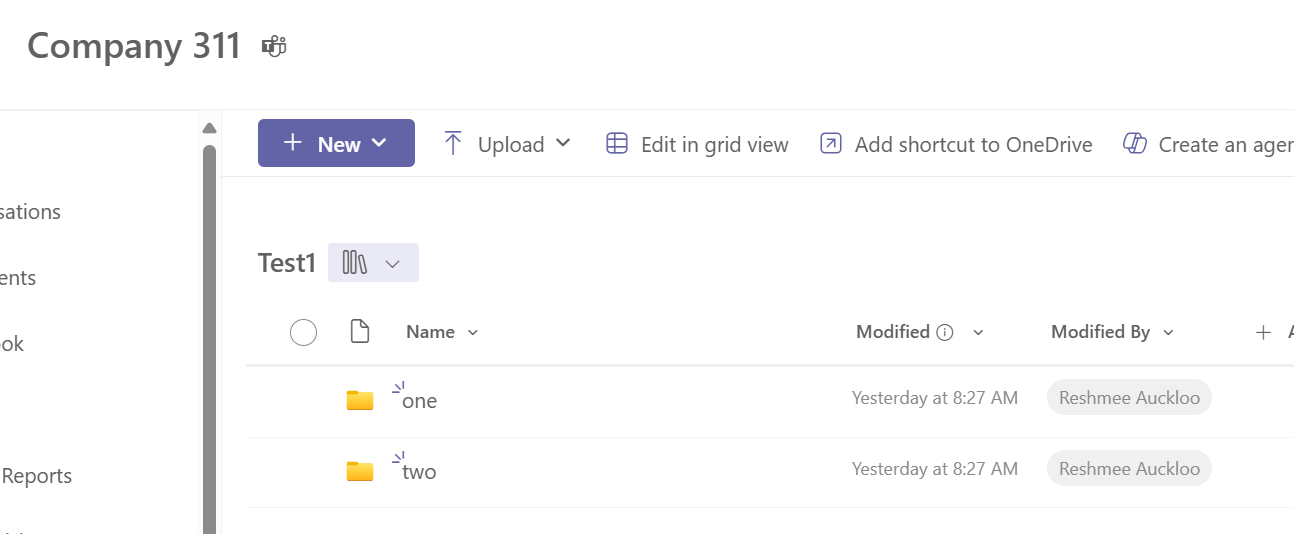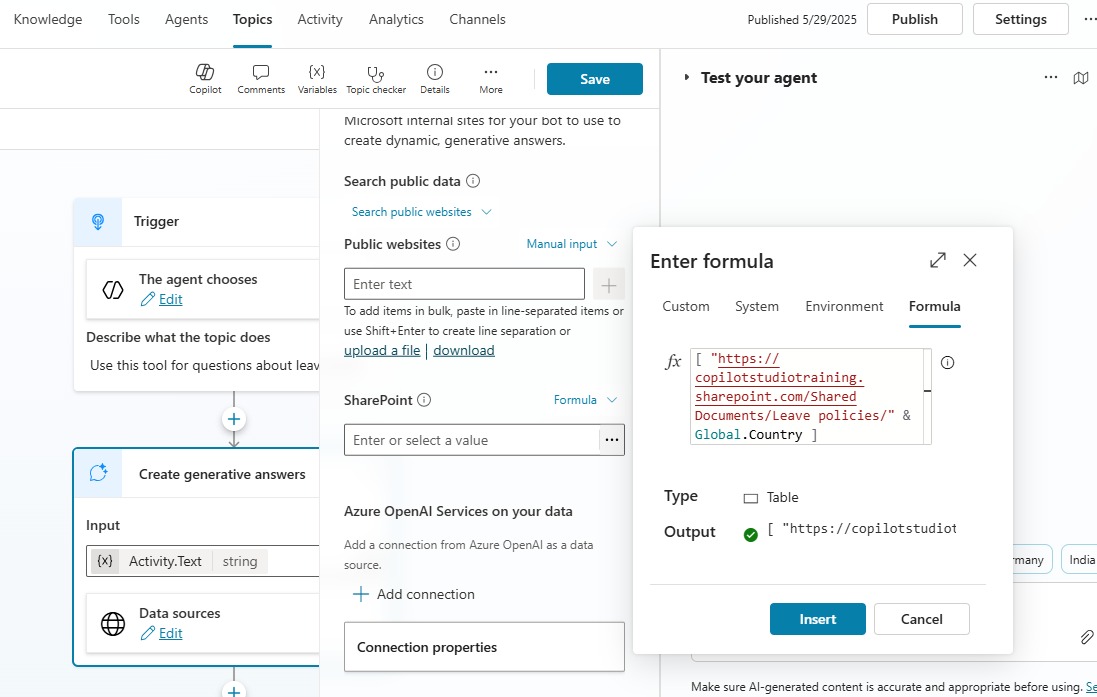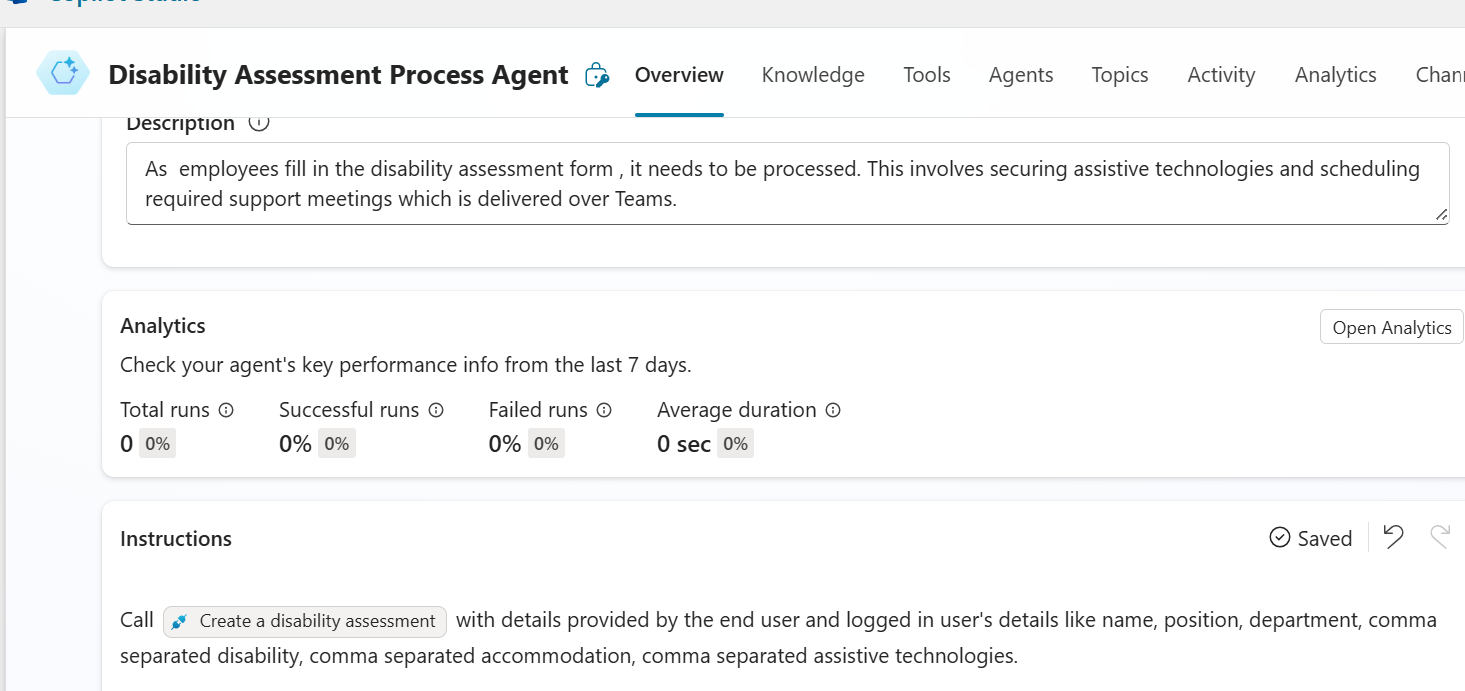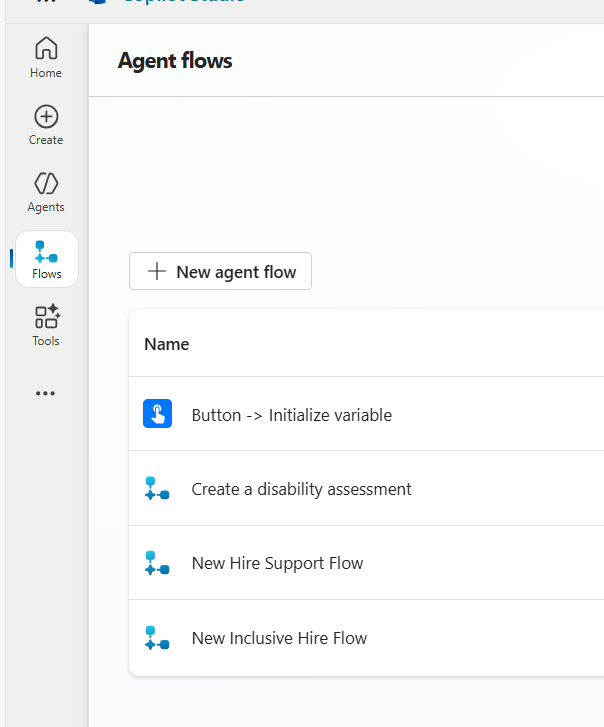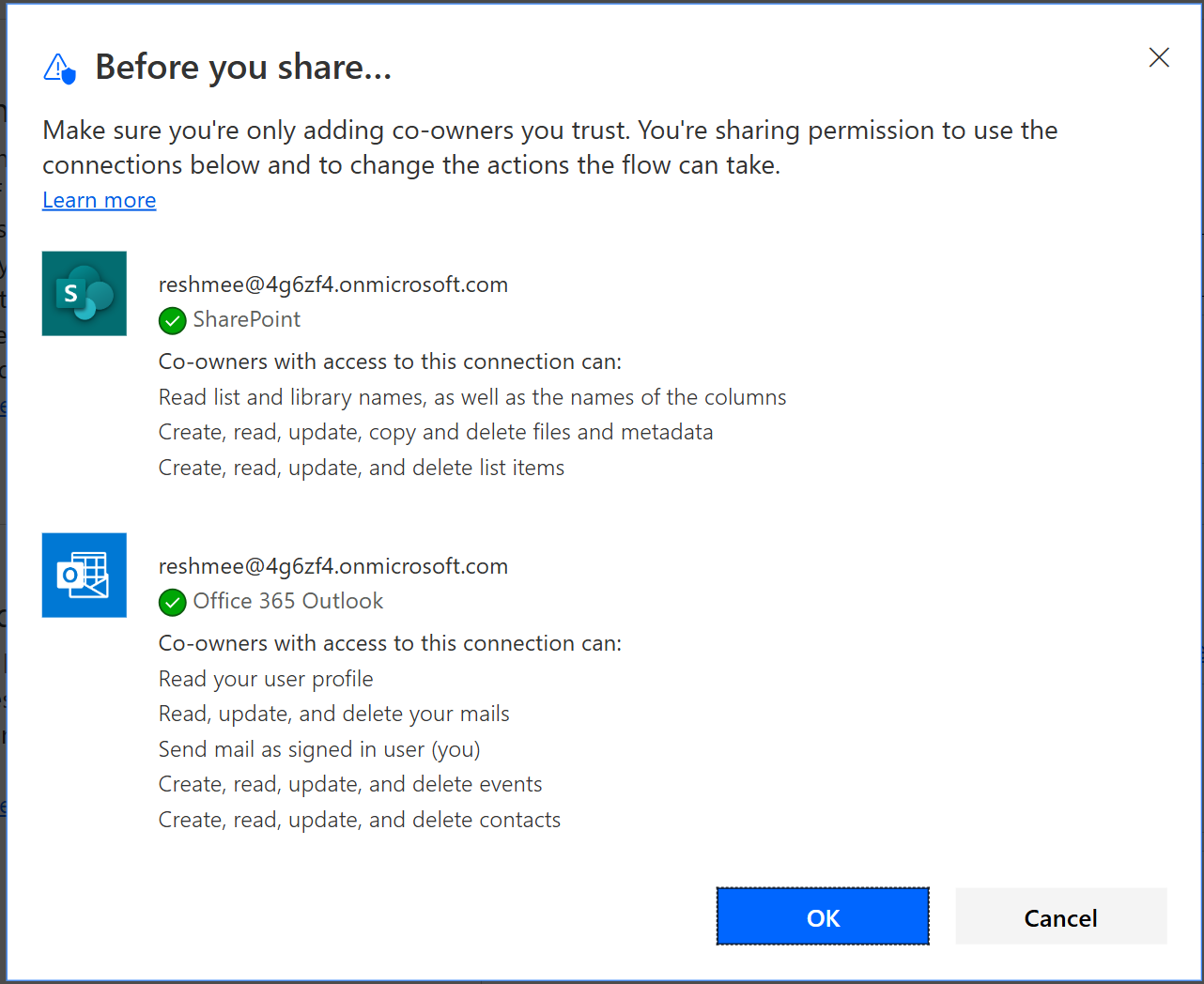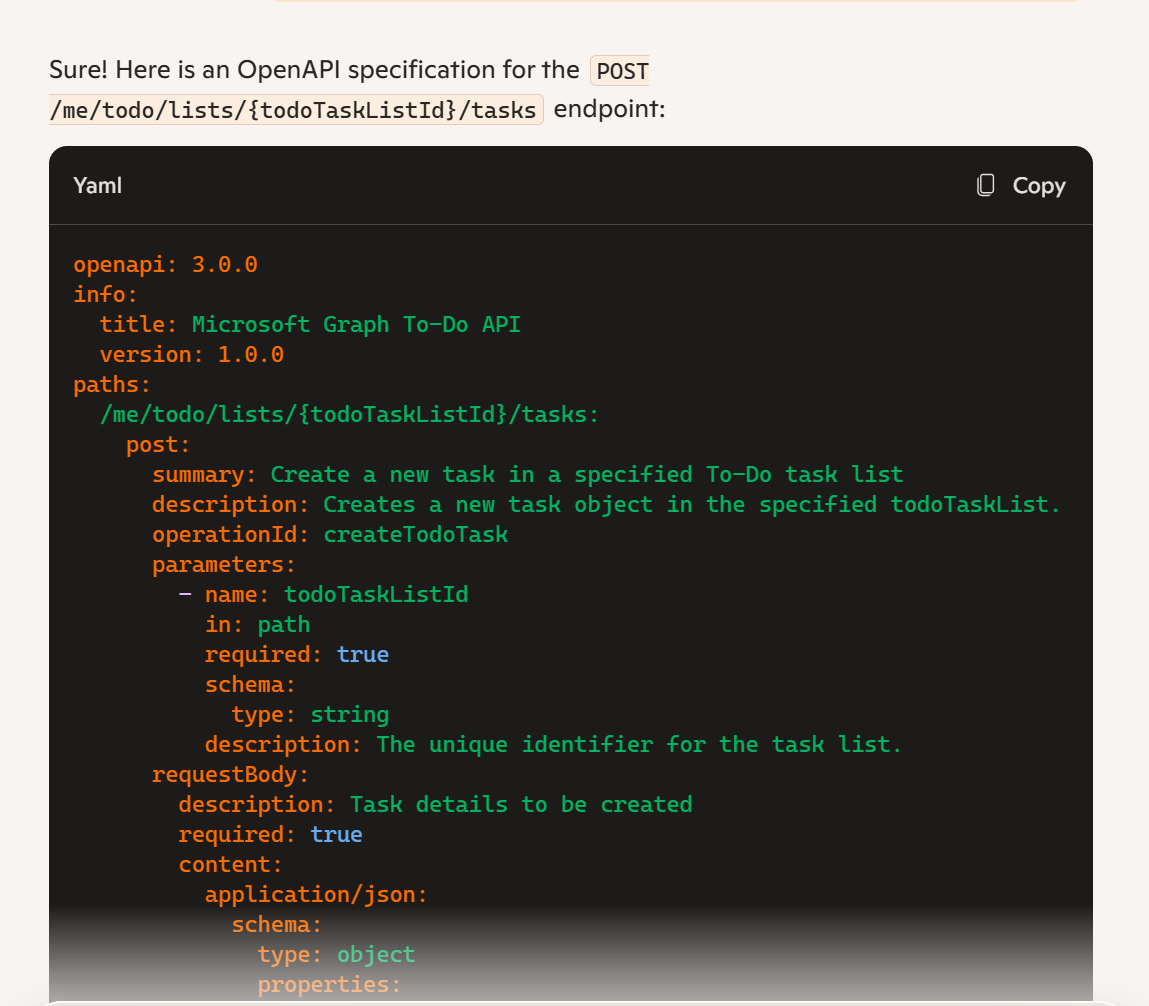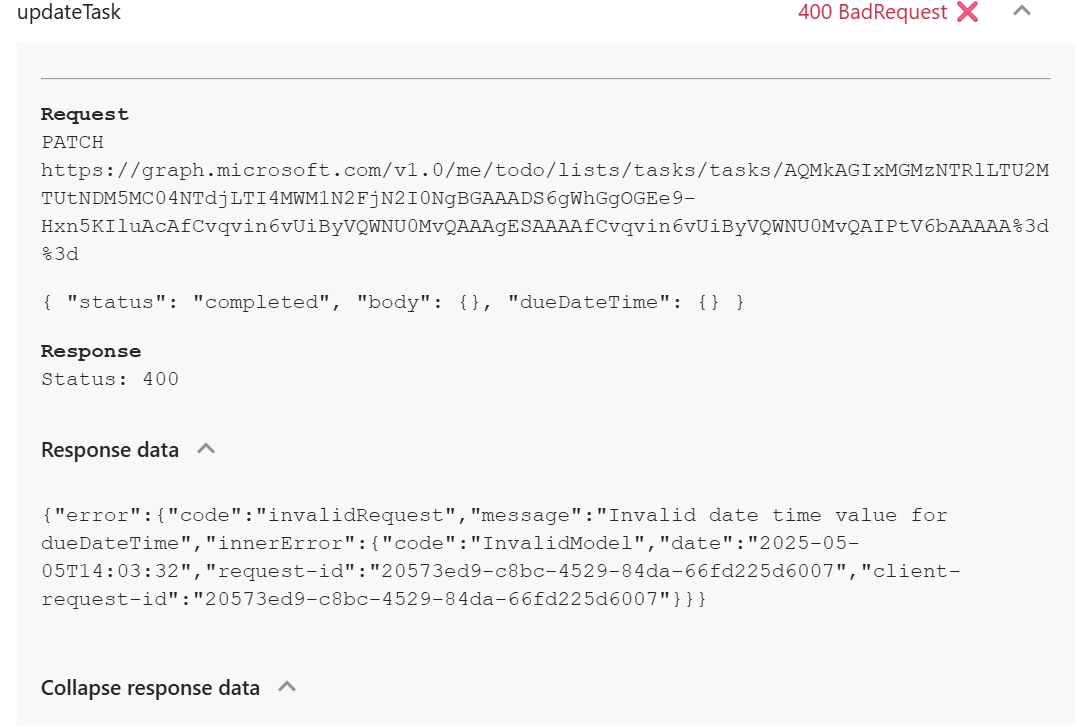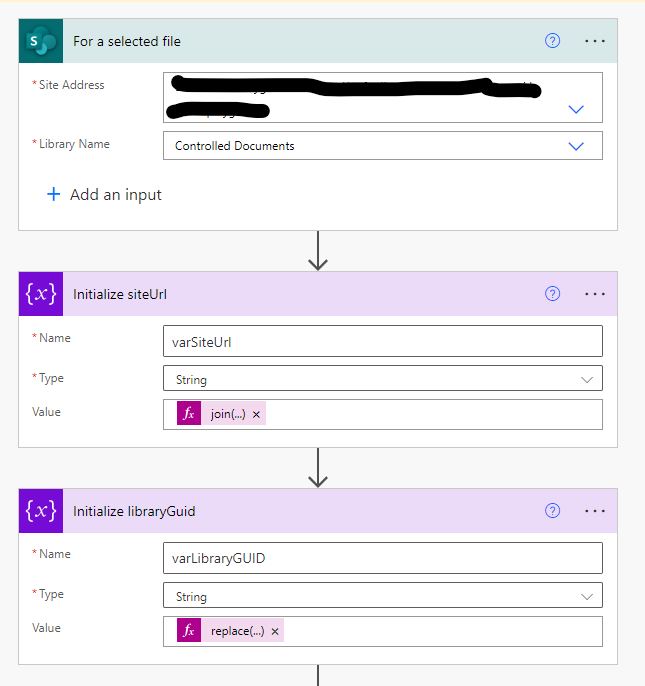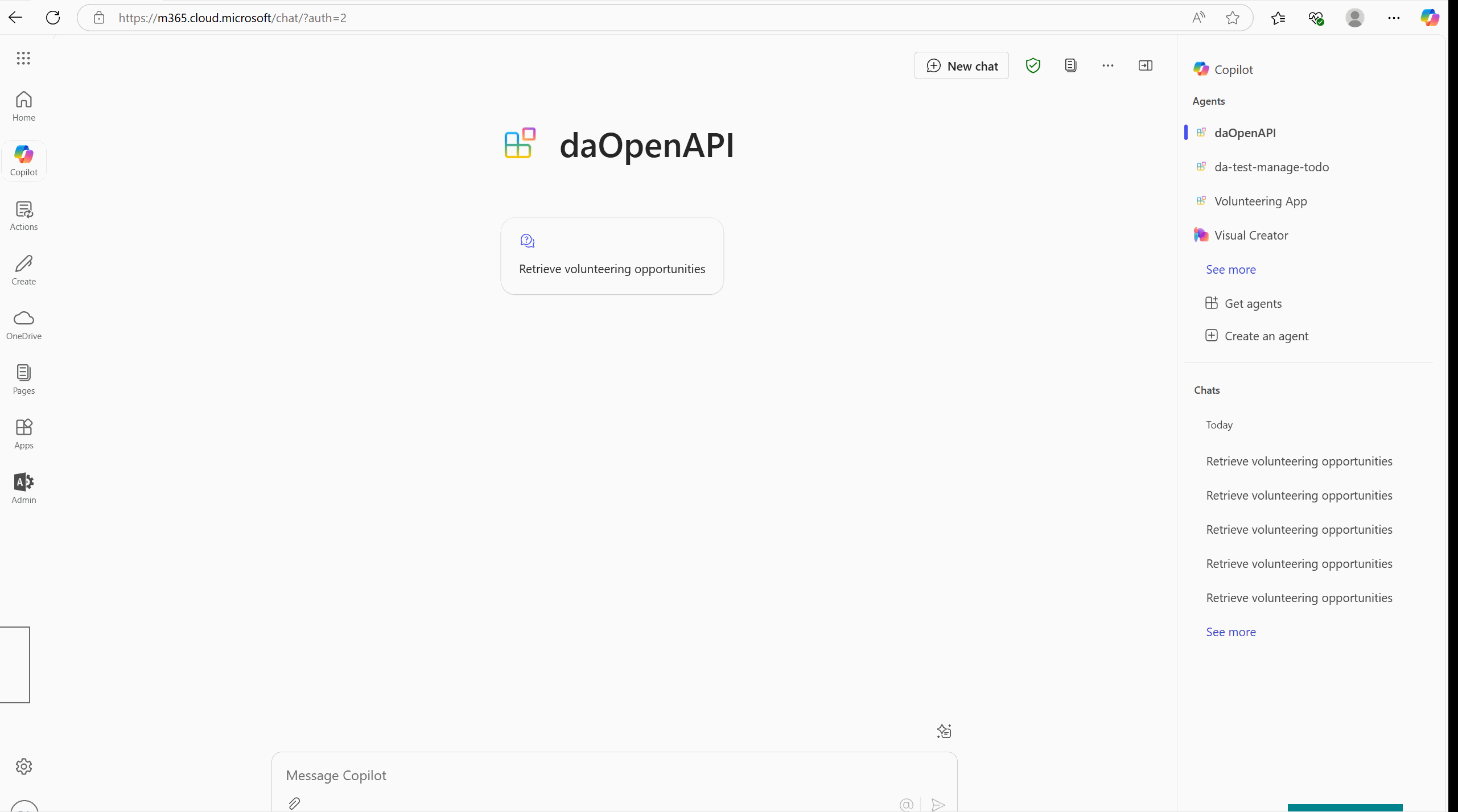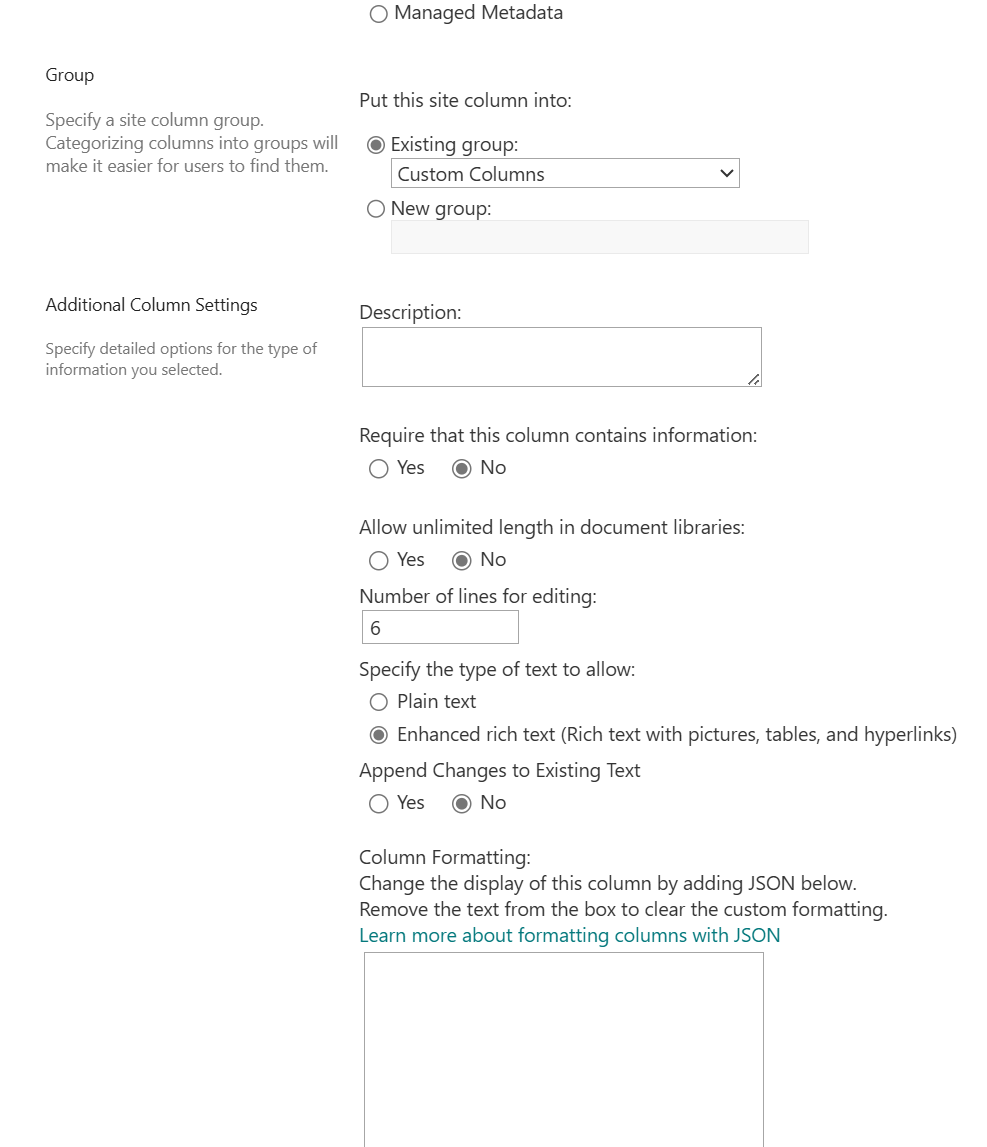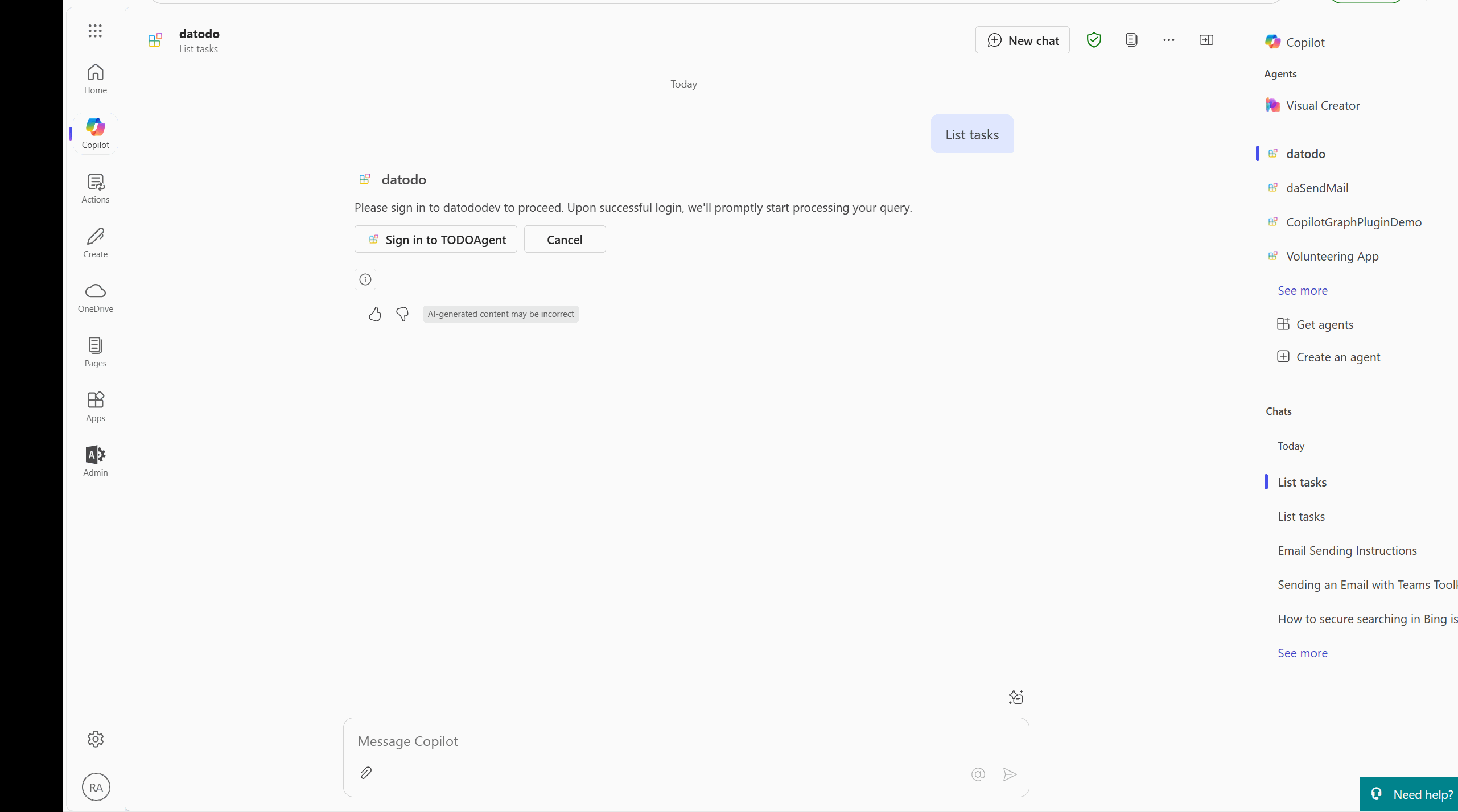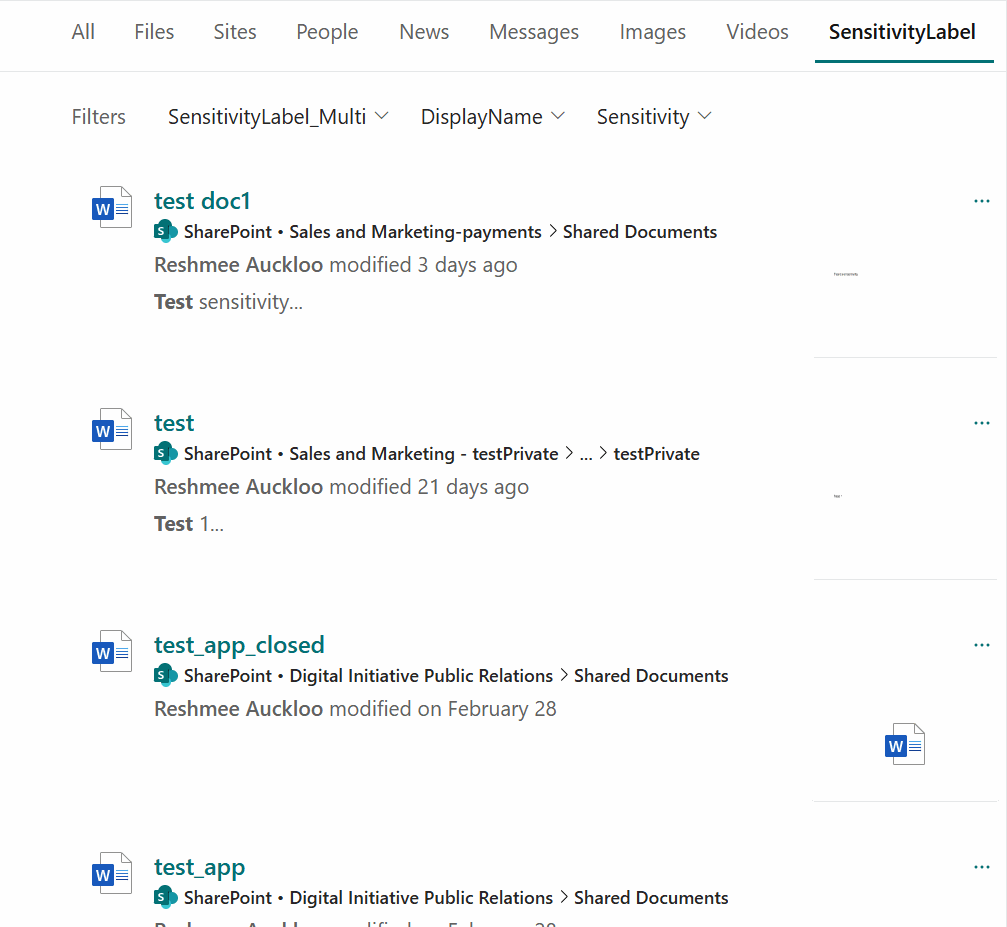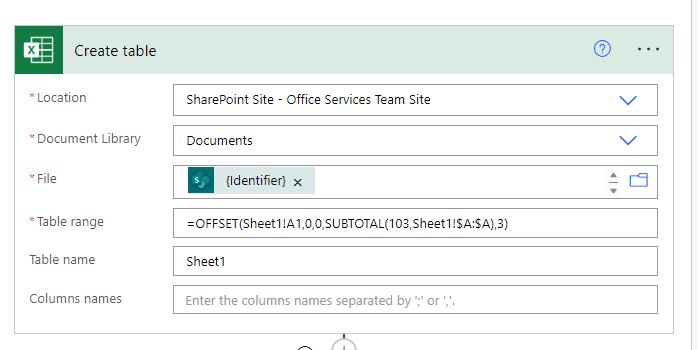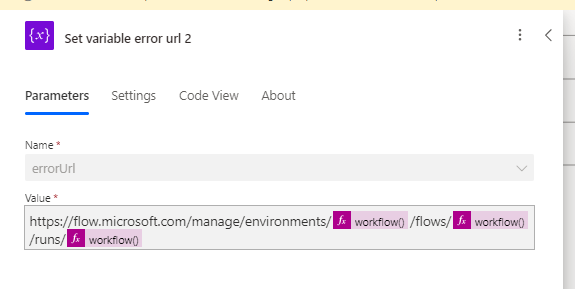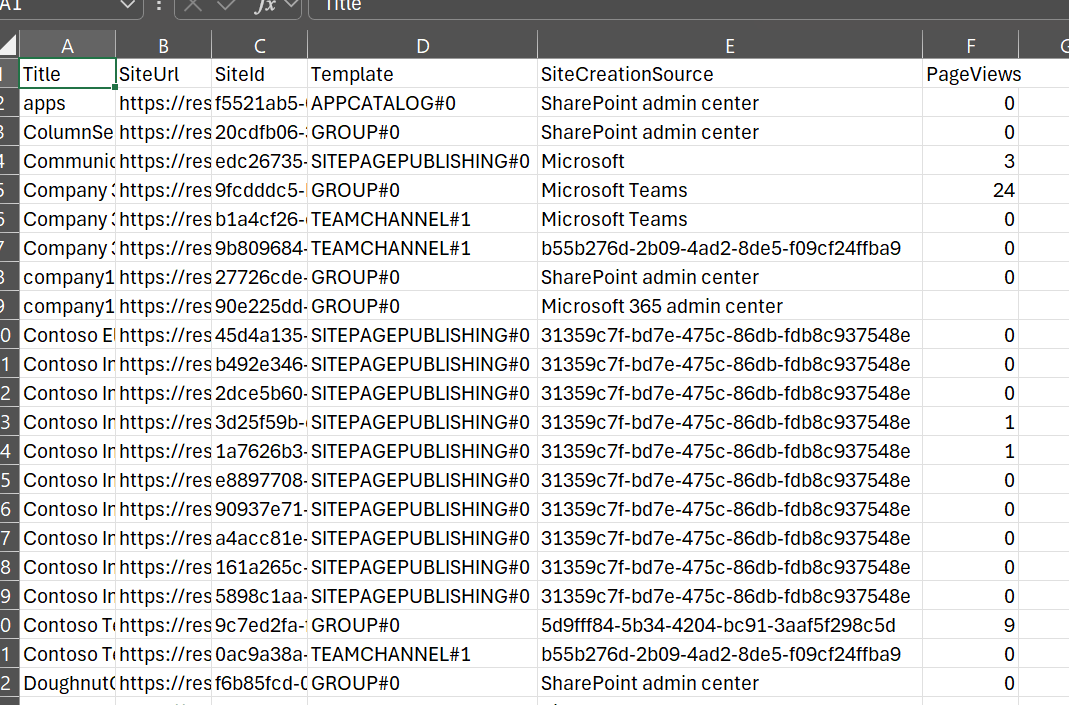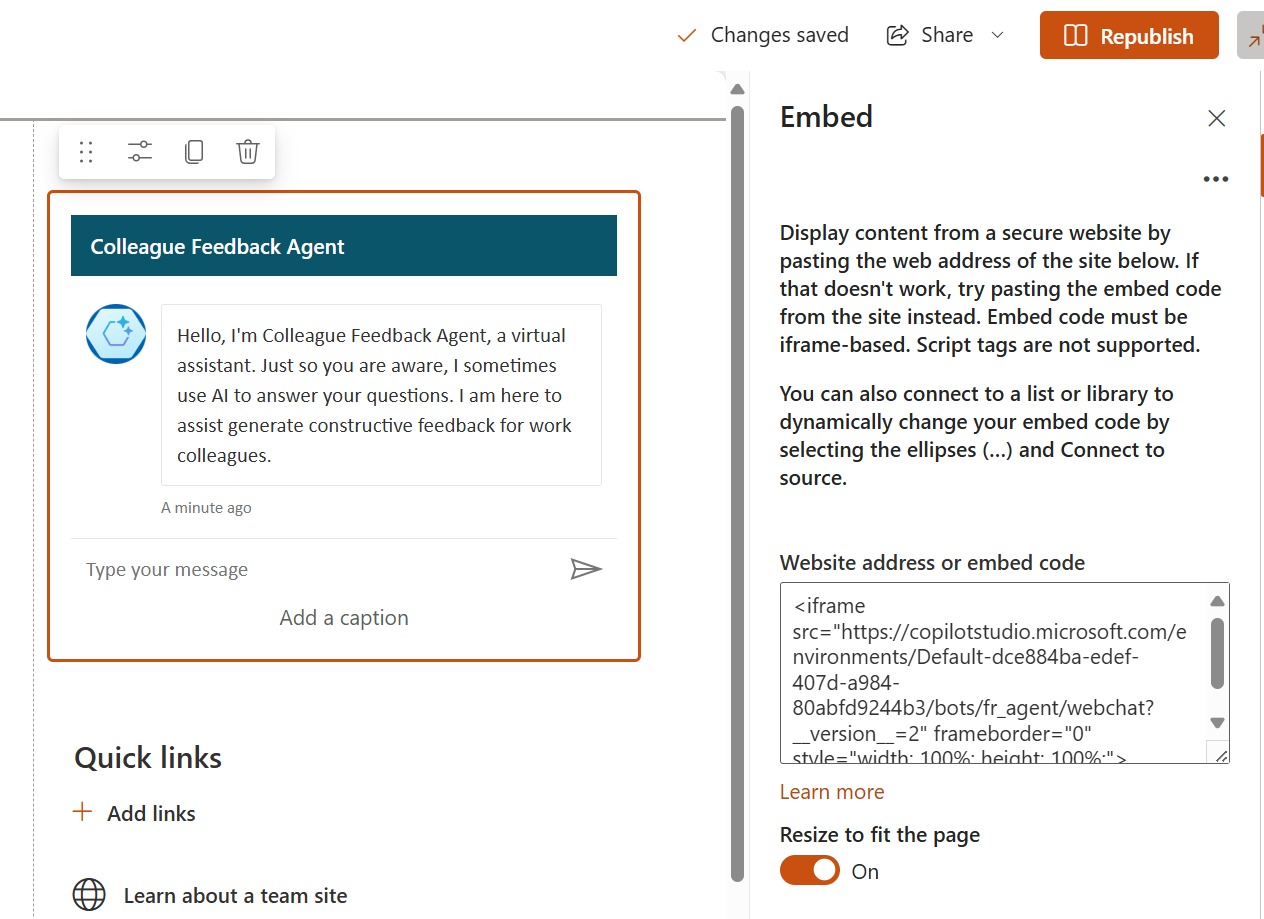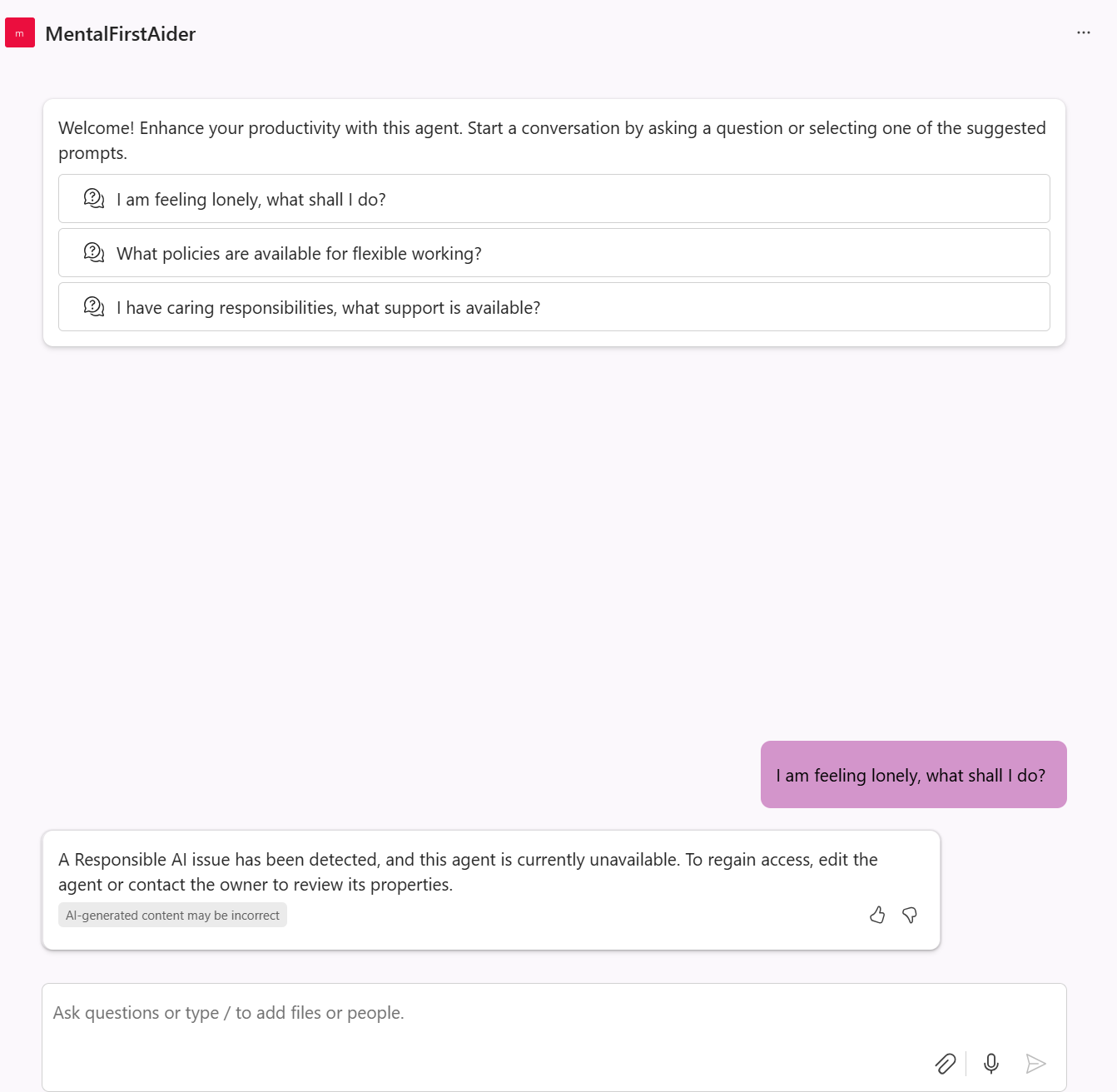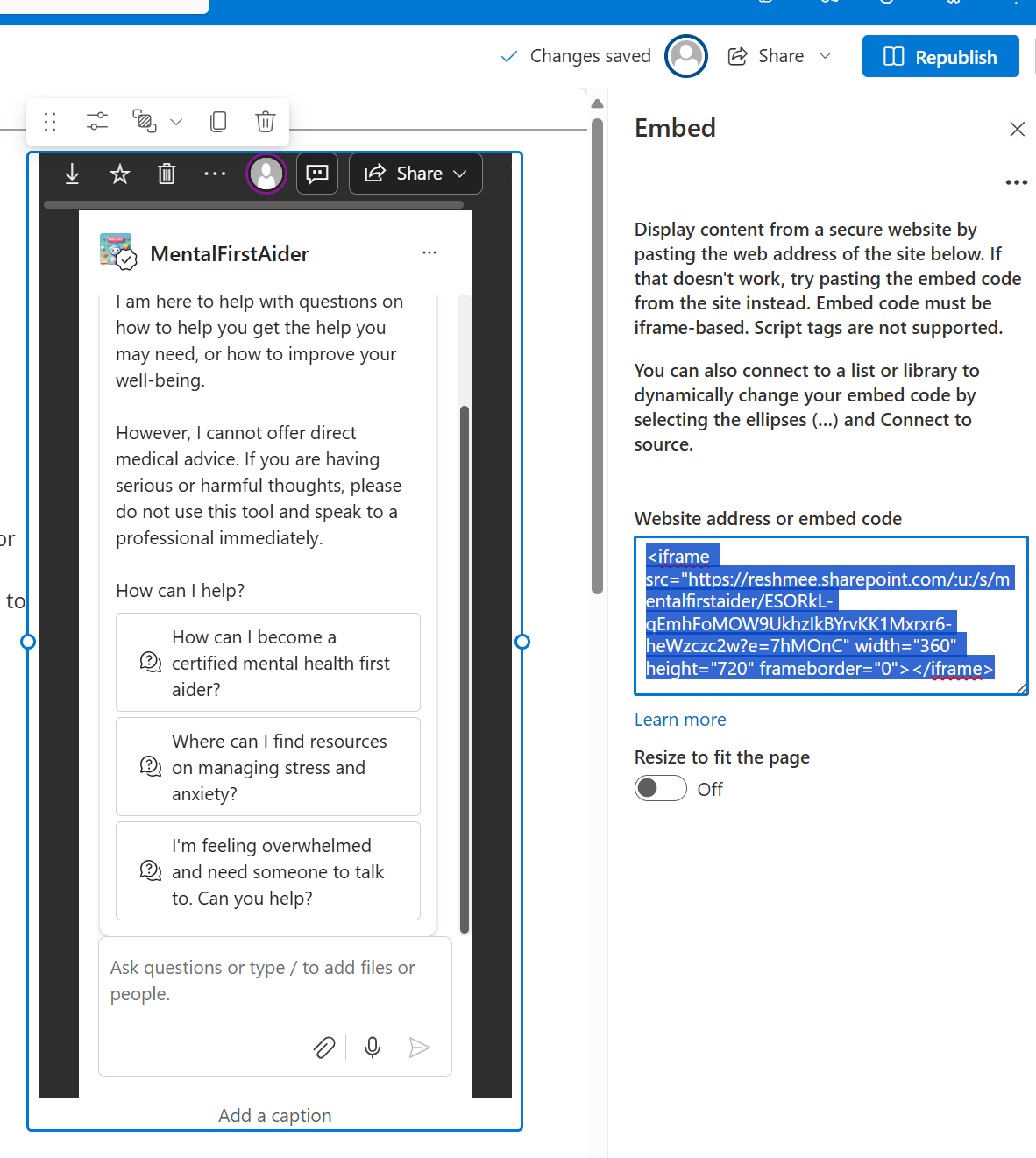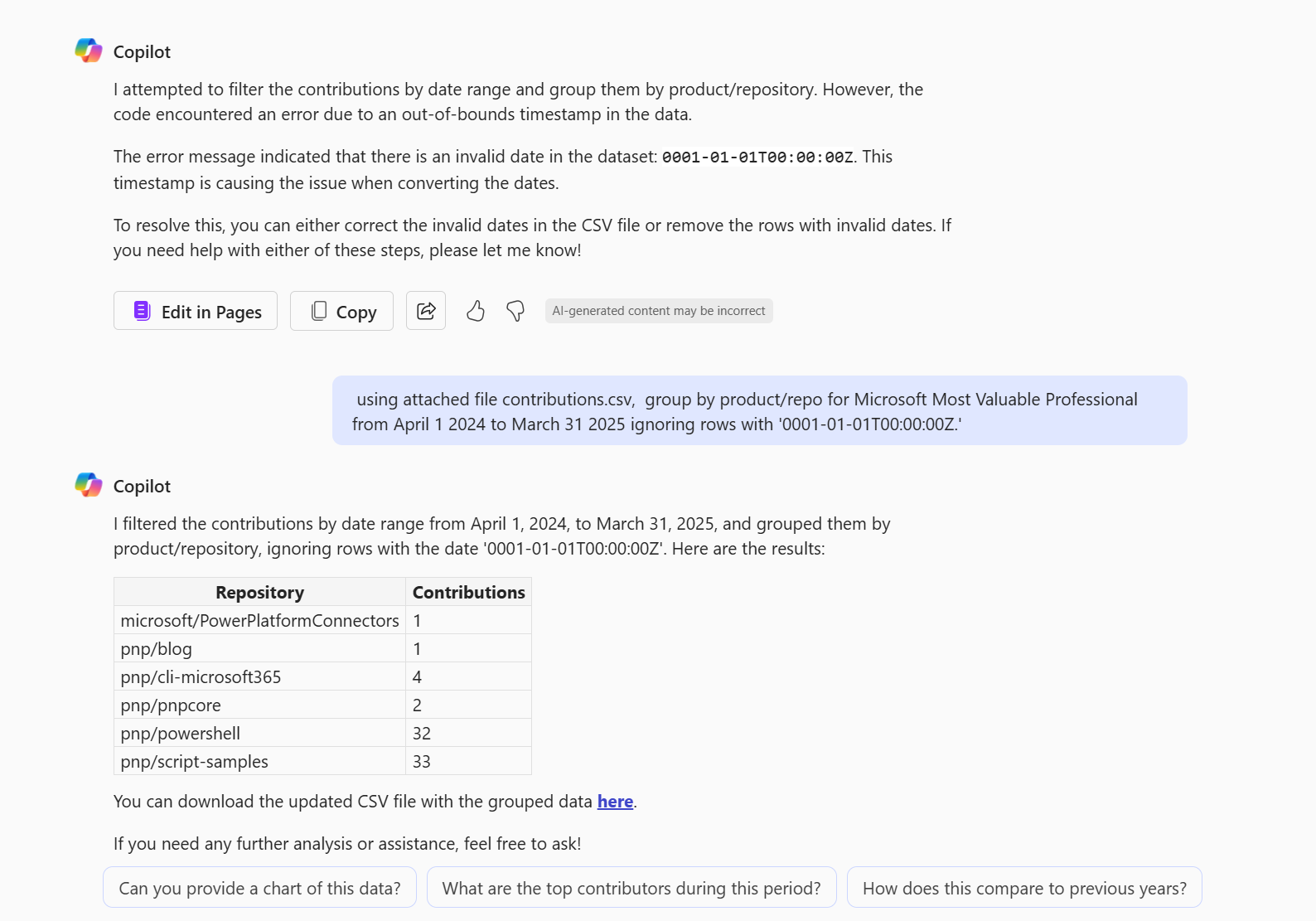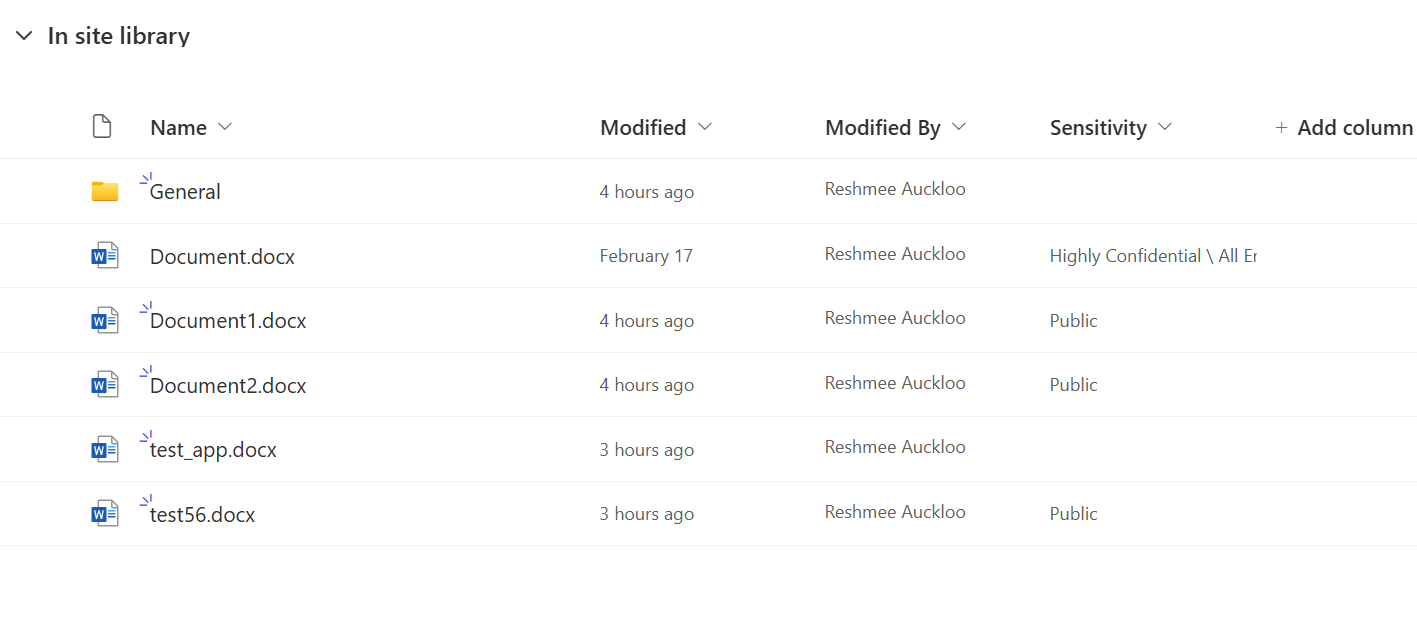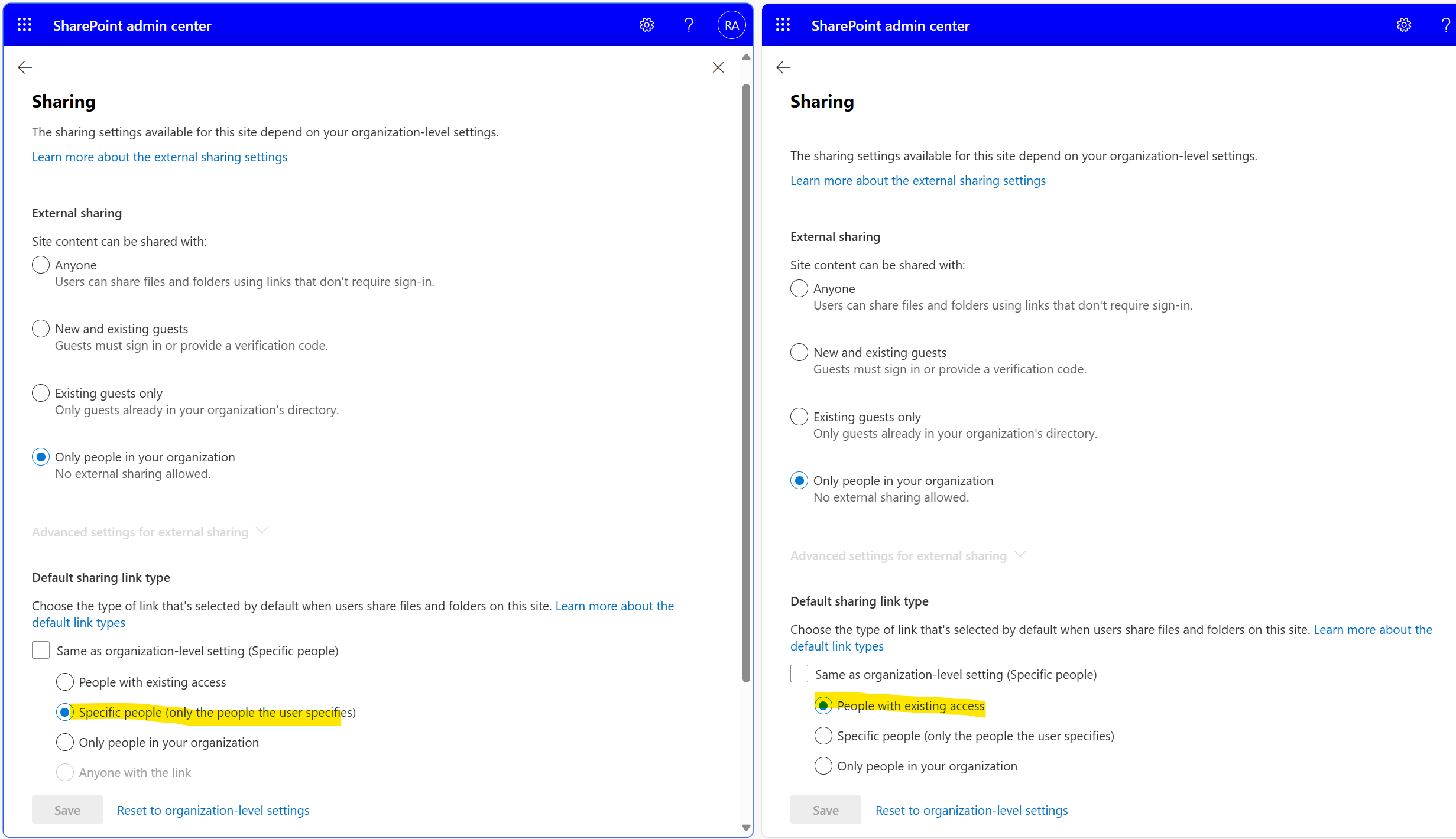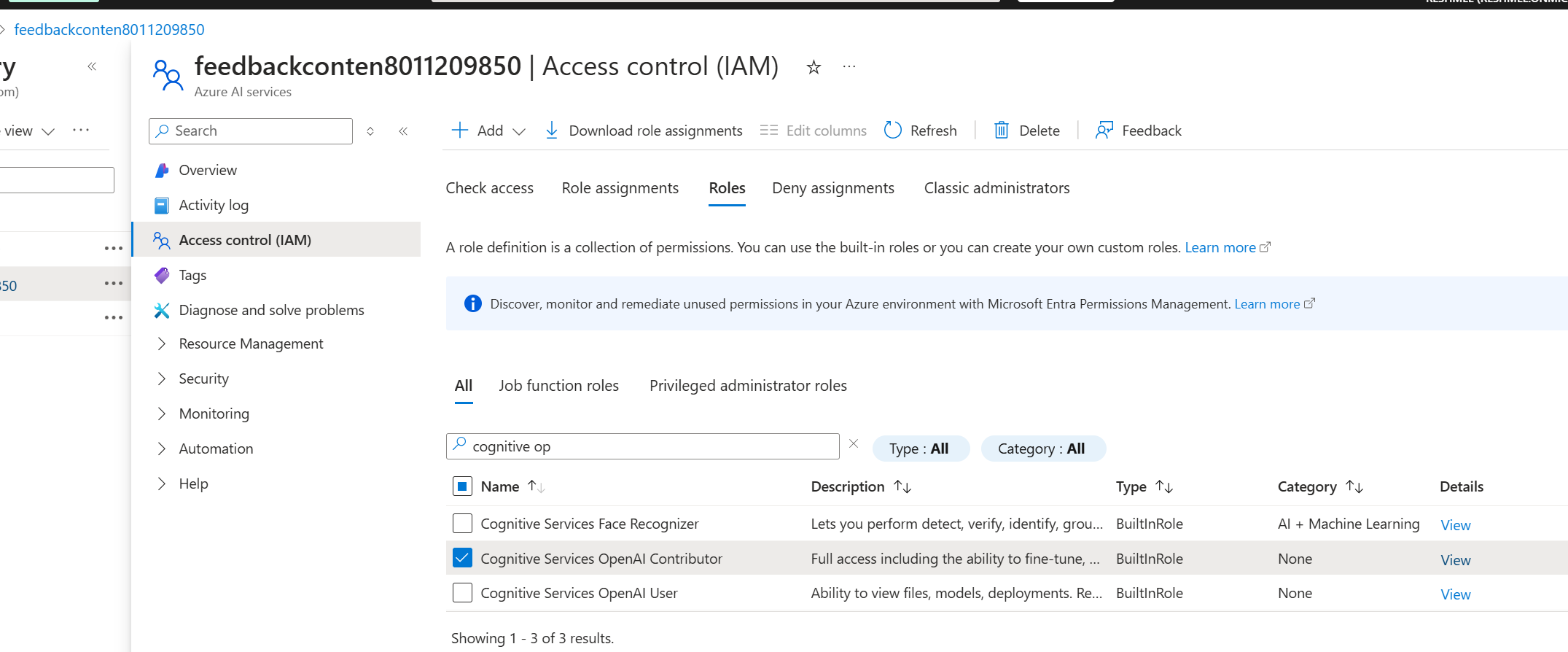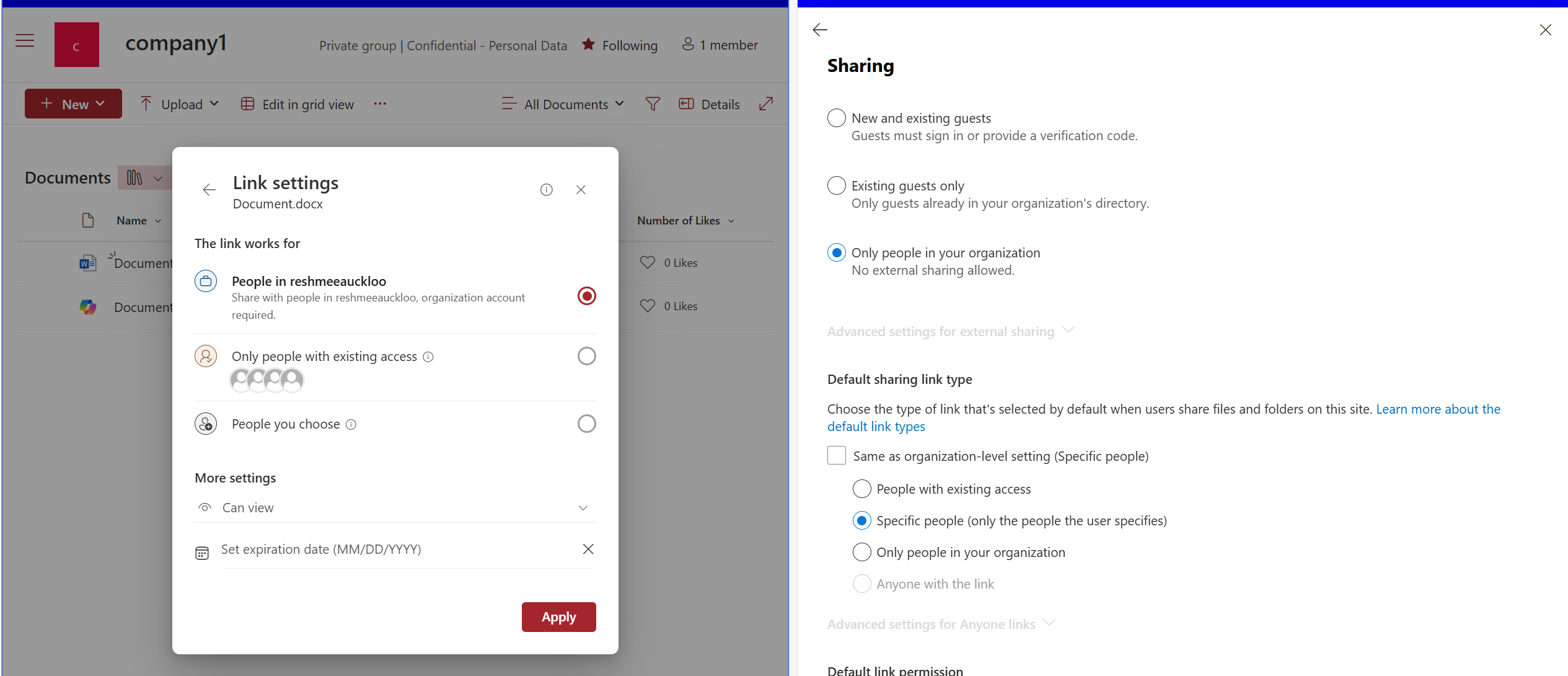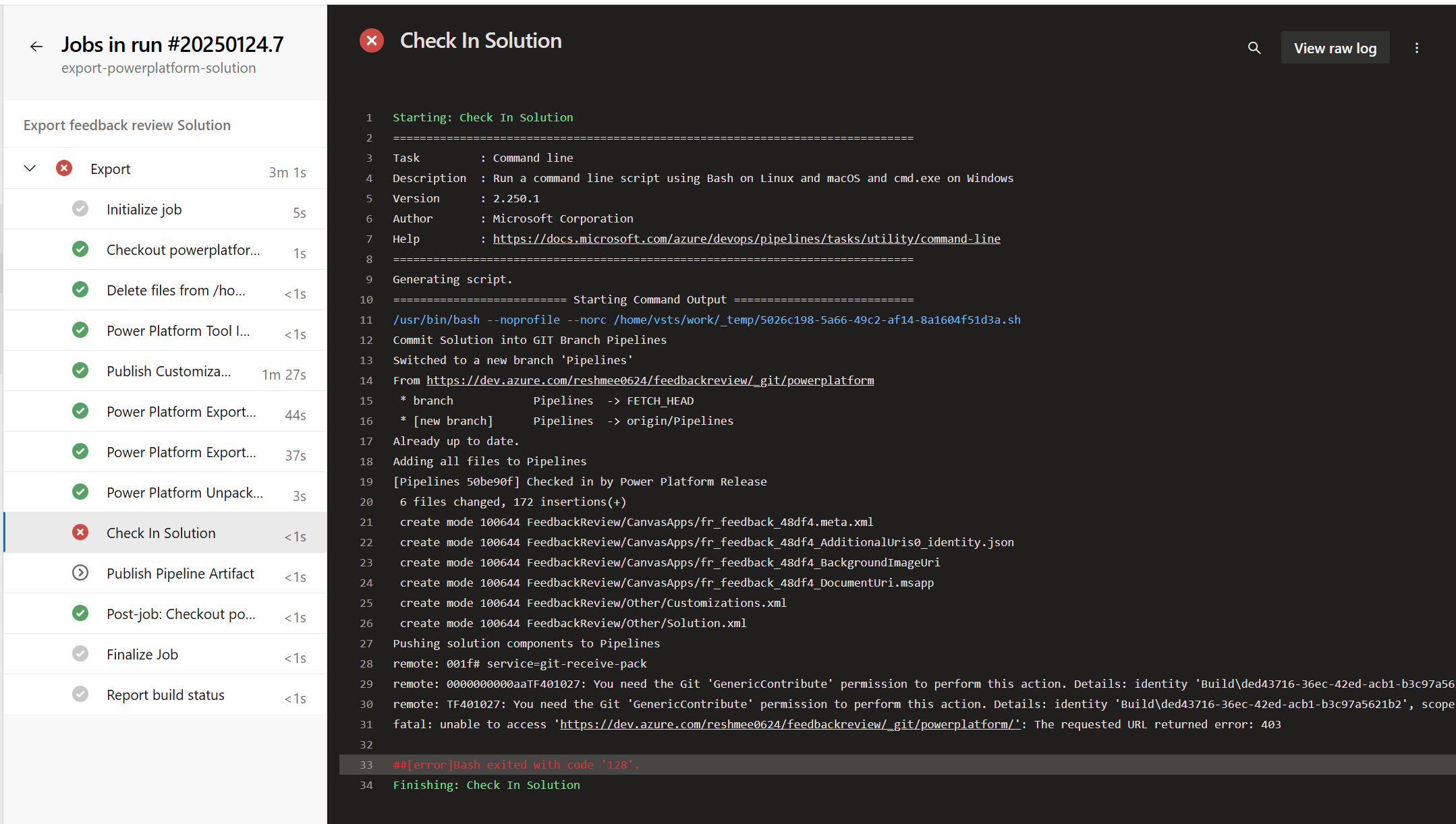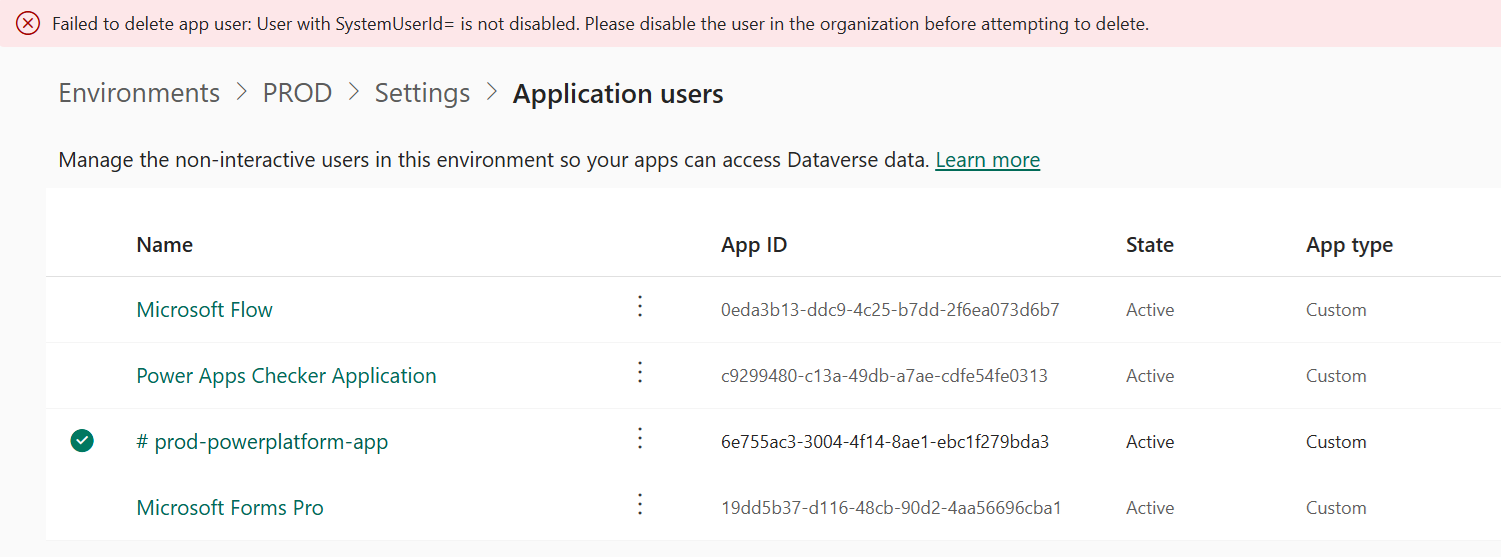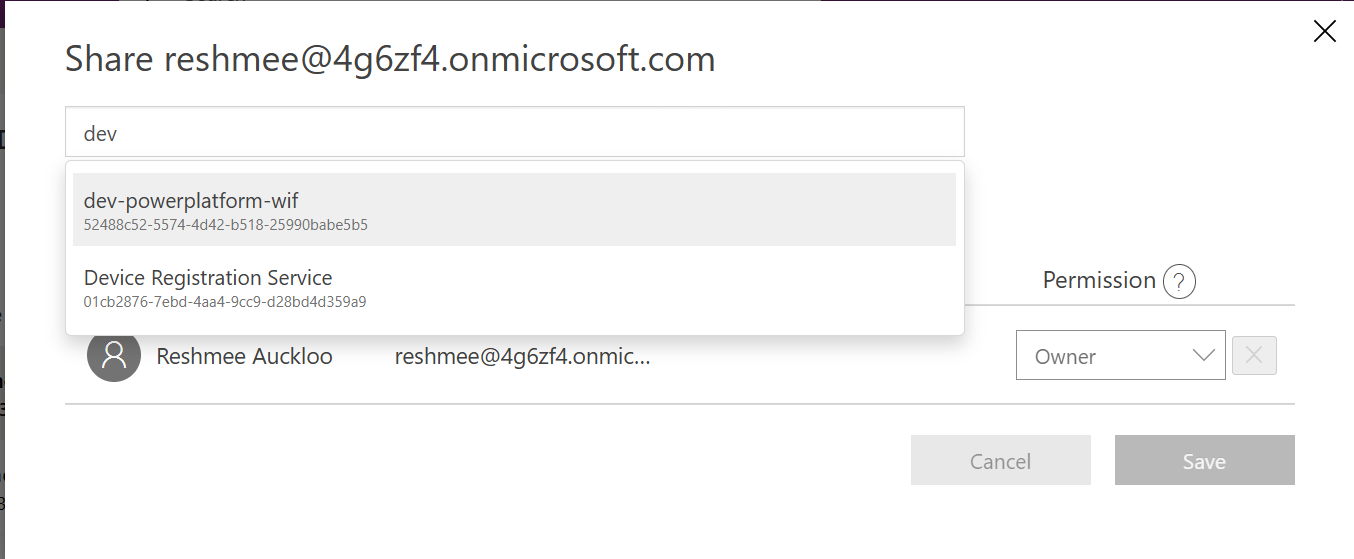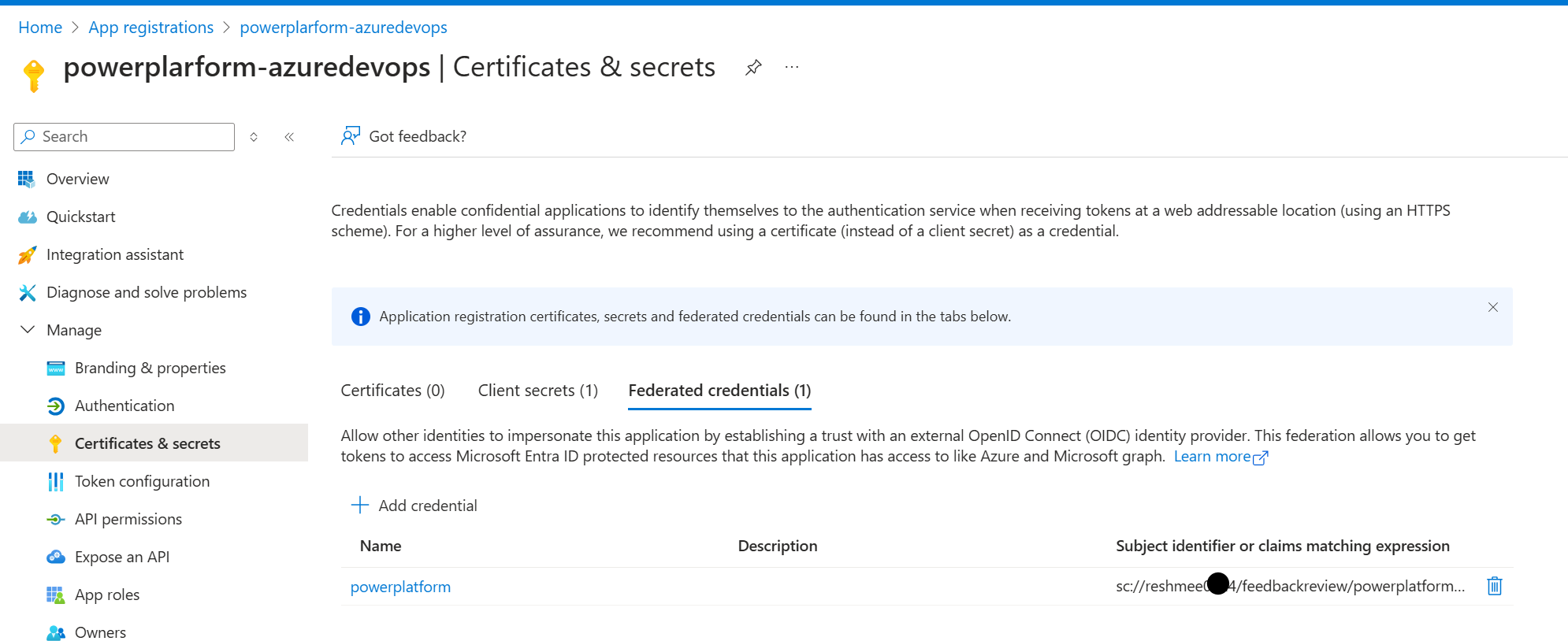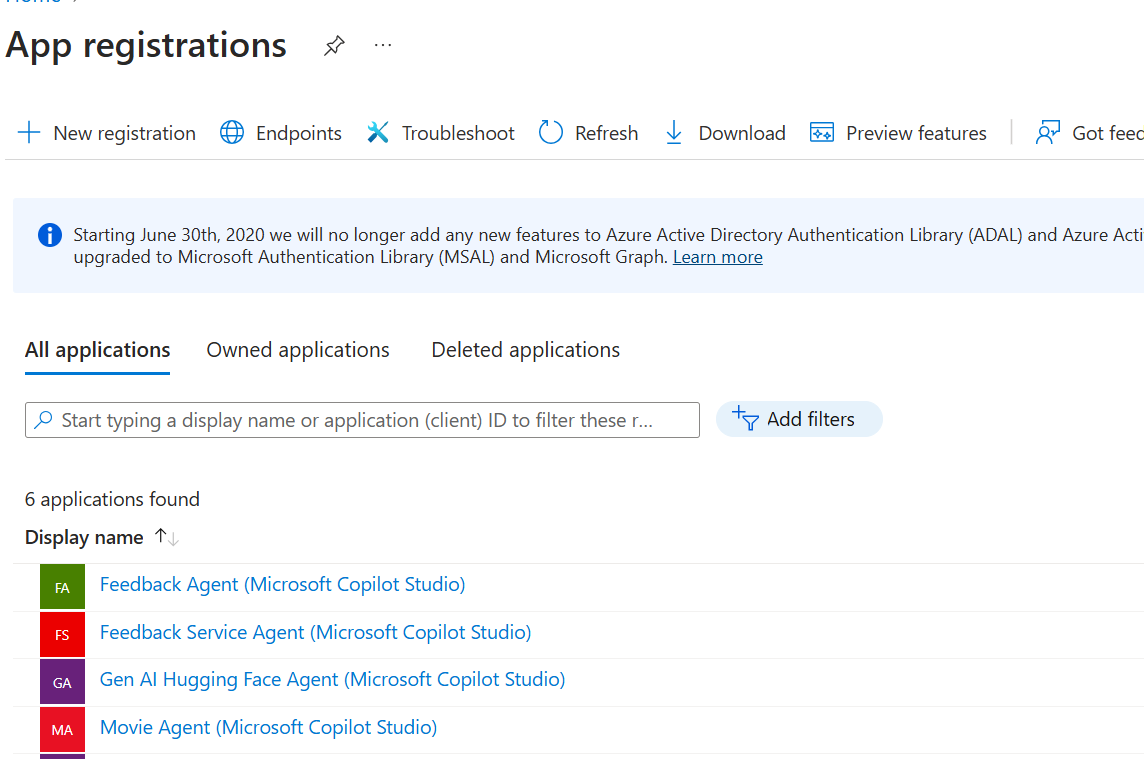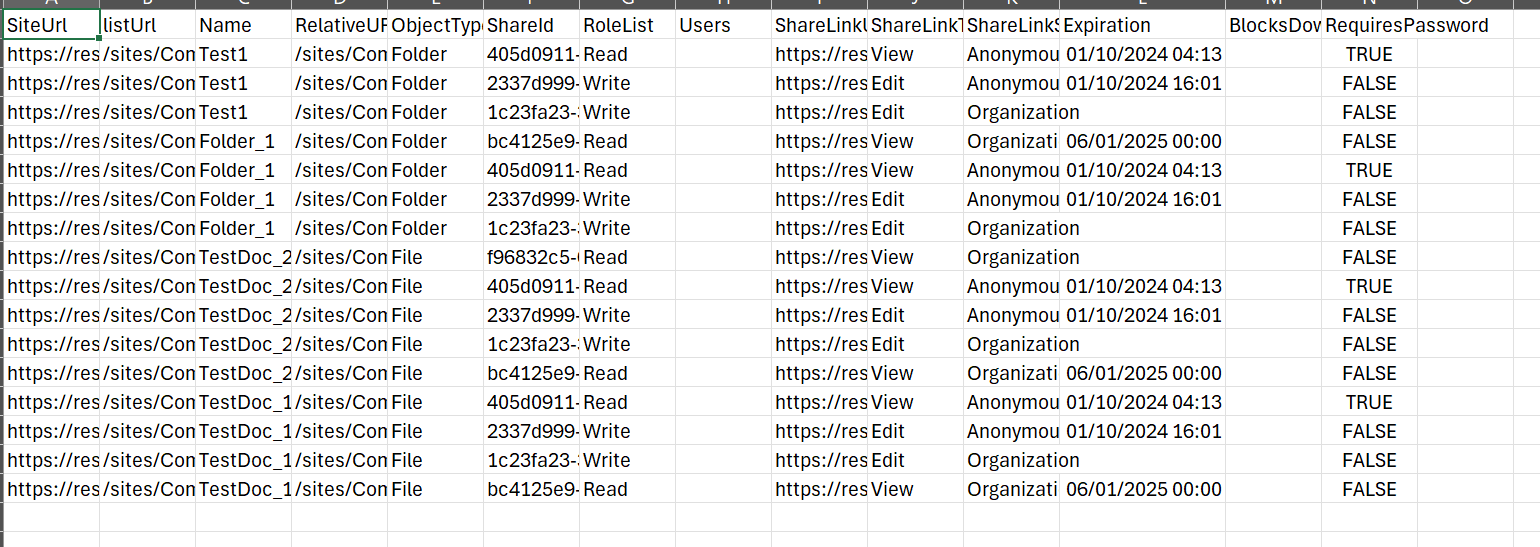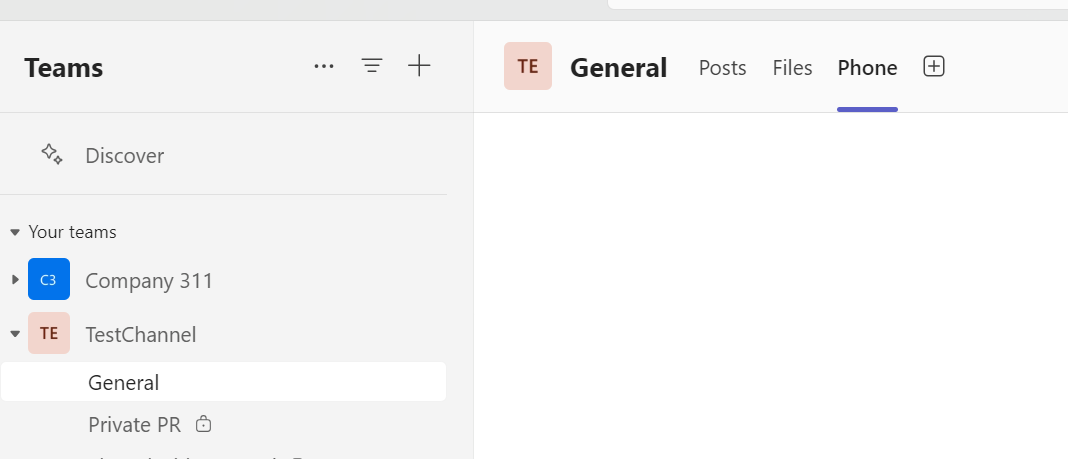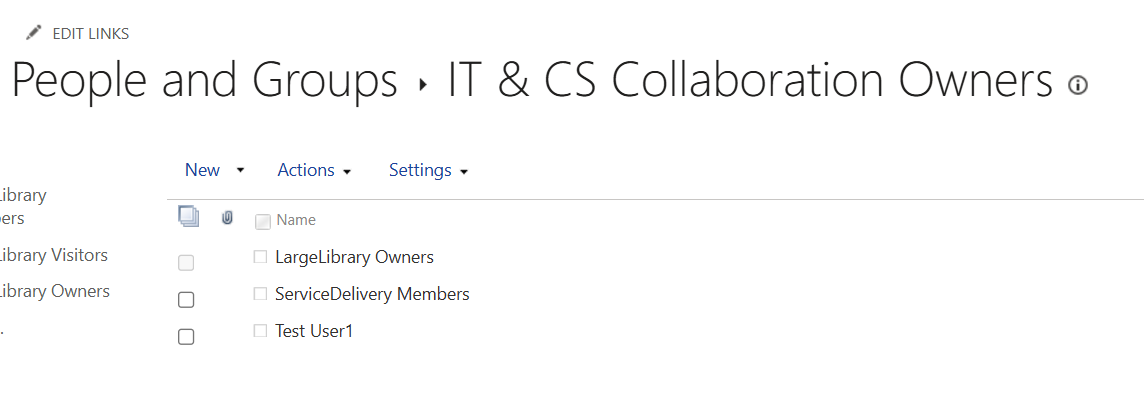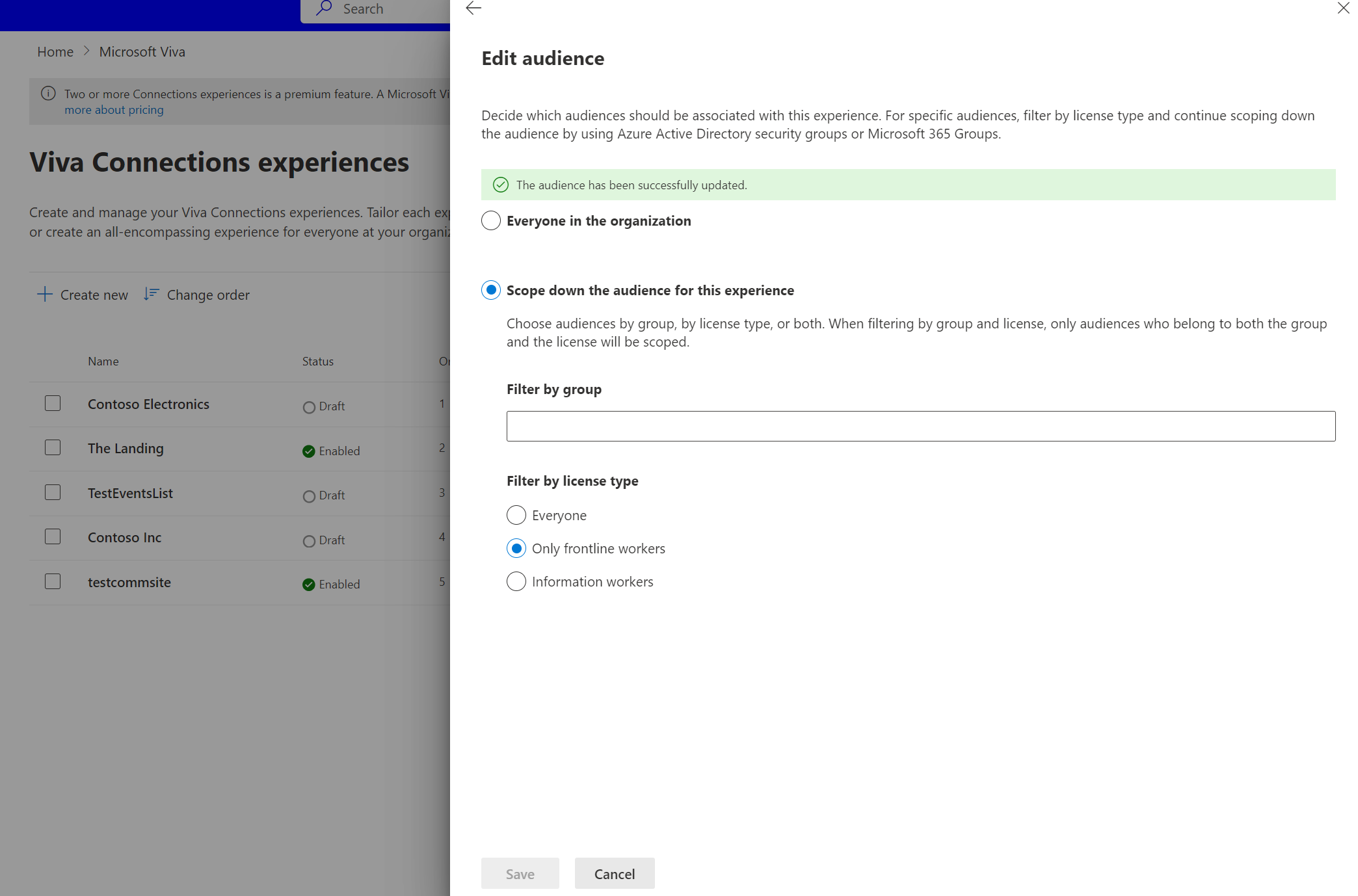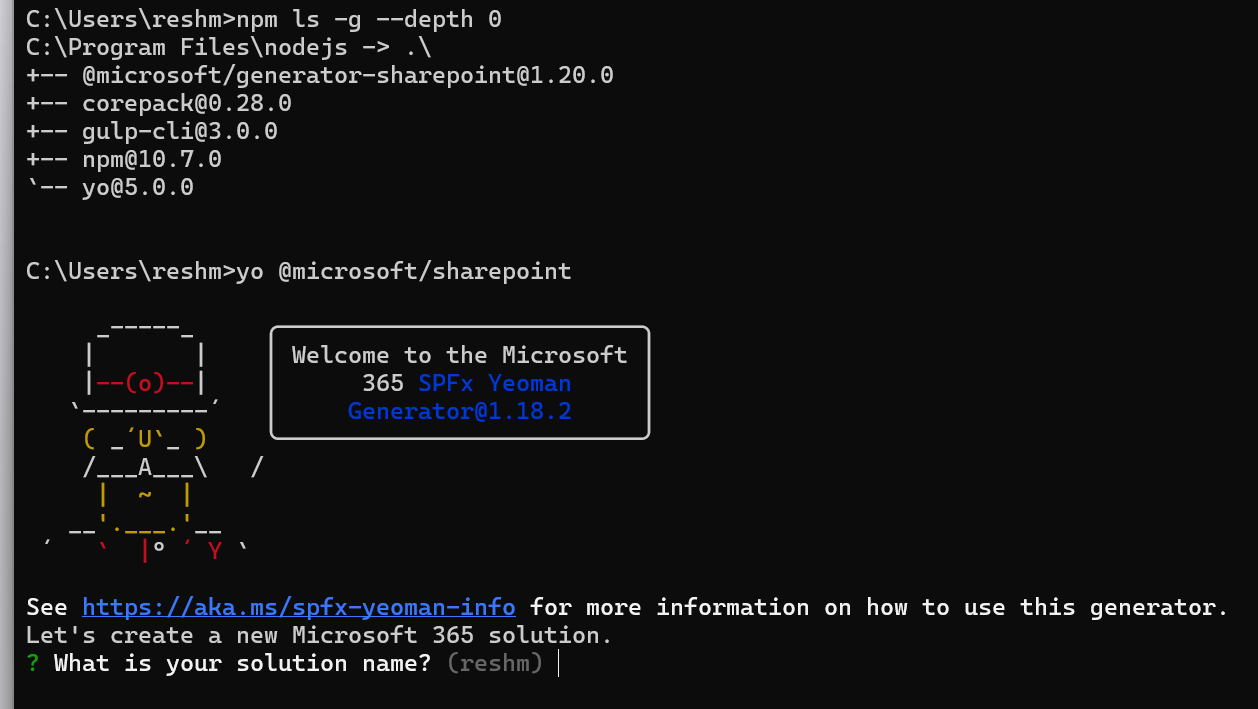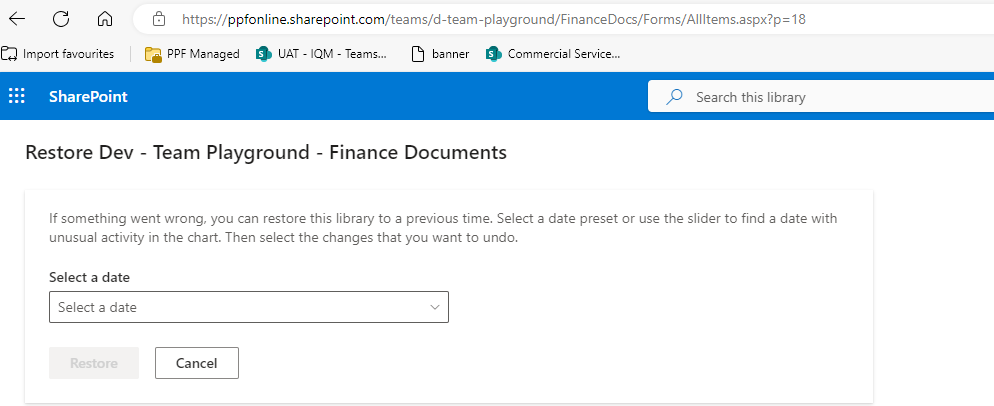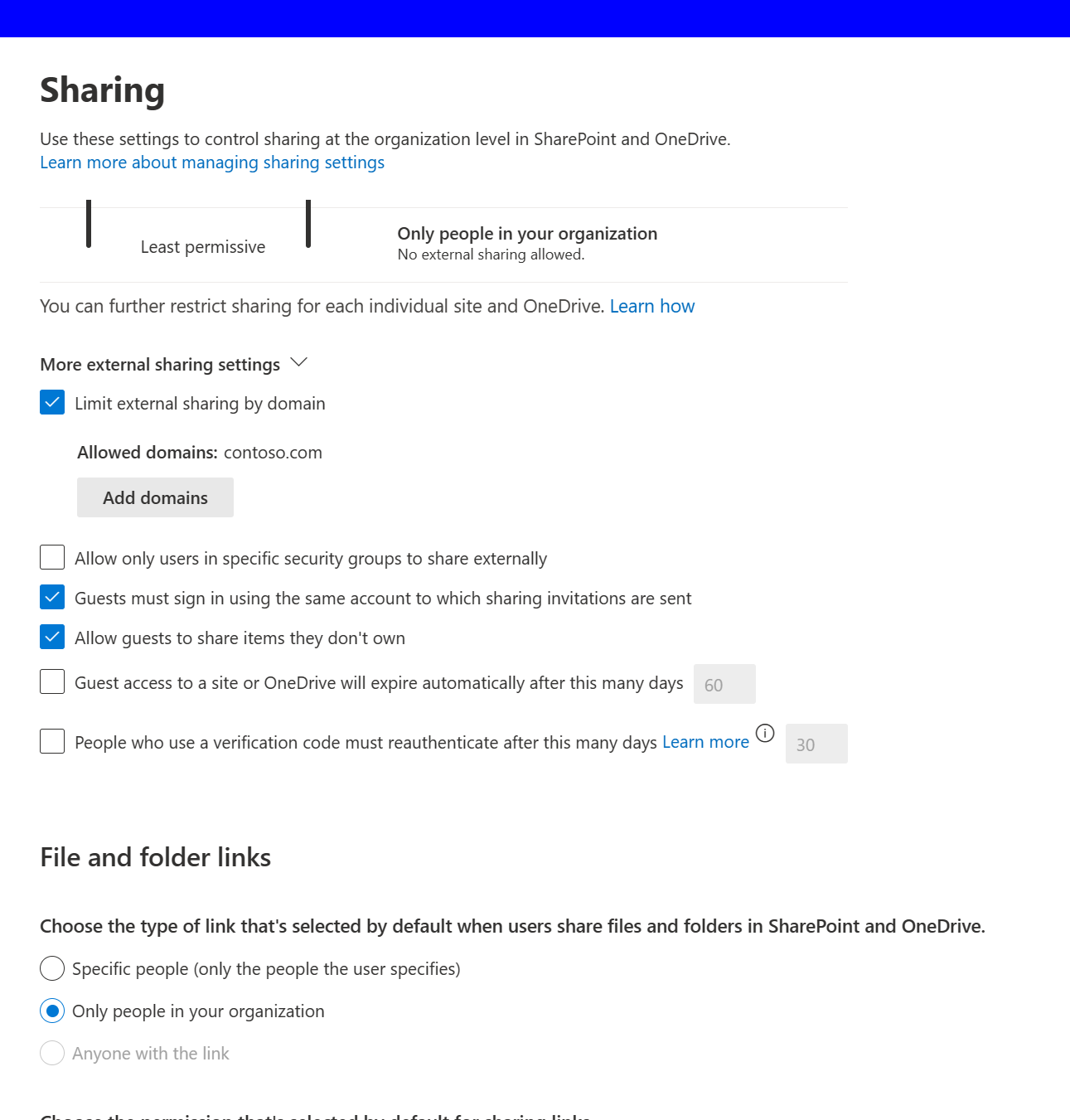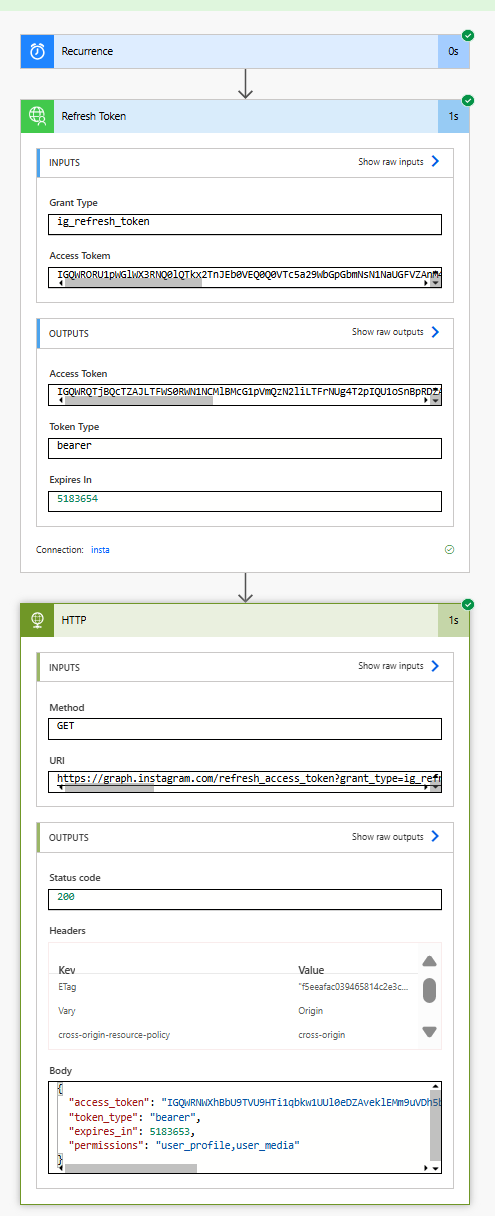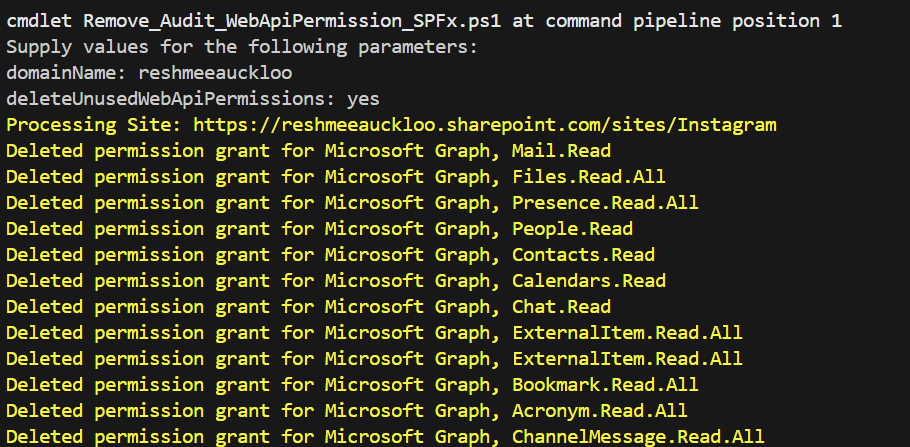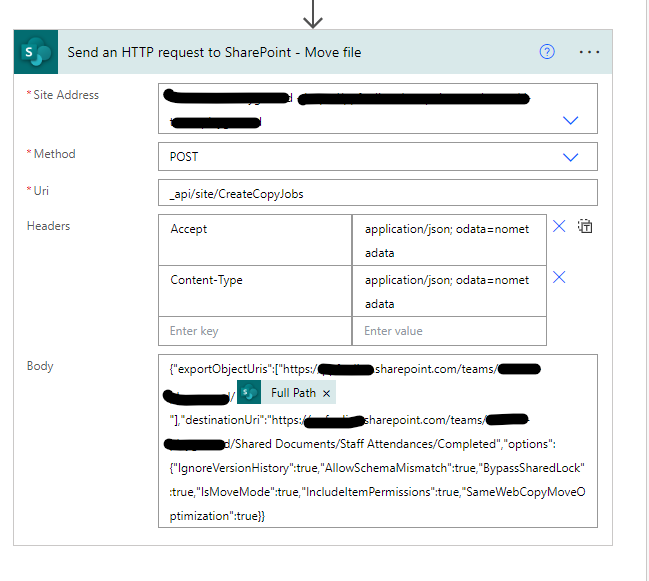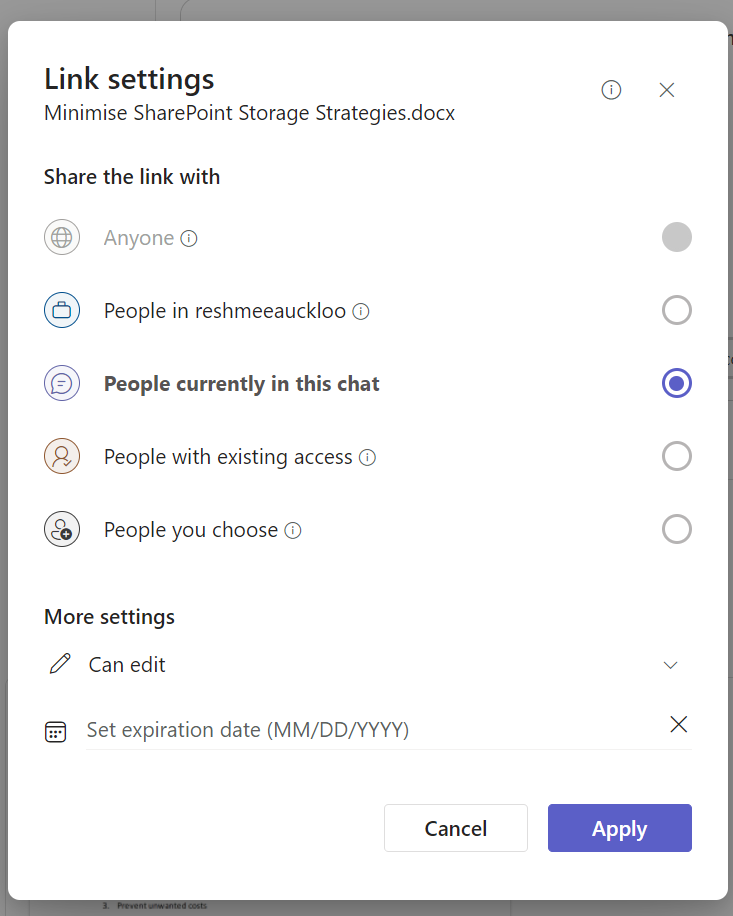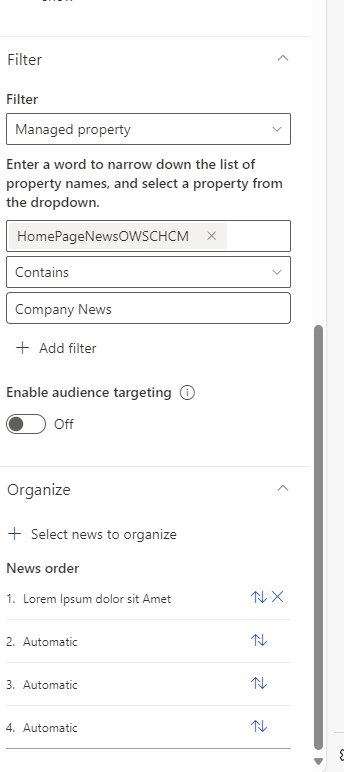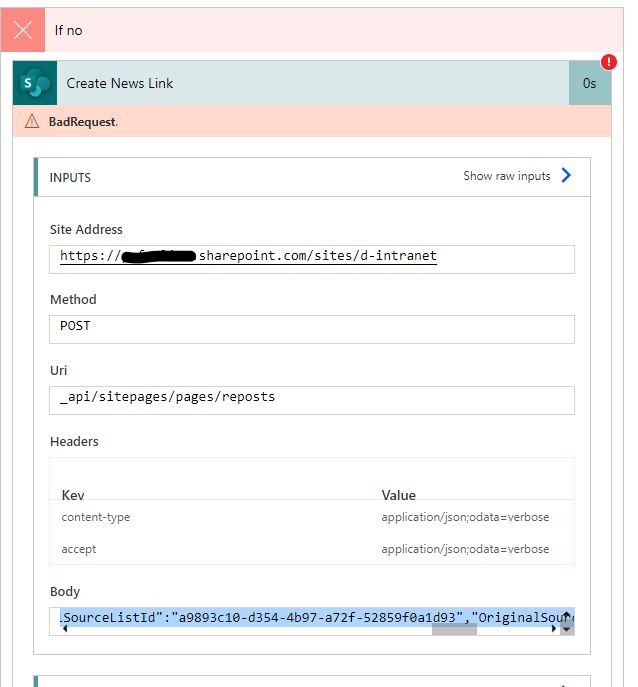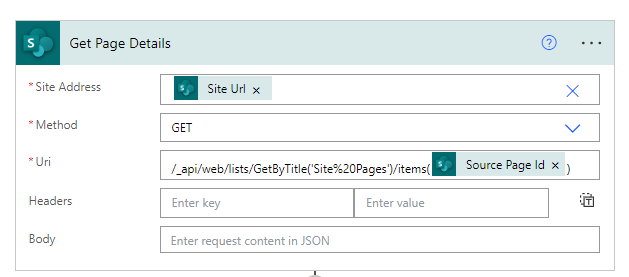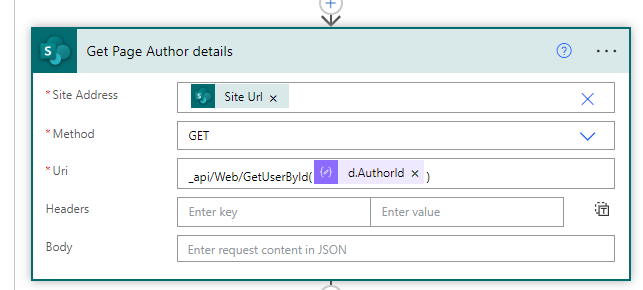Welcome to my blog! Be inspired and keep inspiring. Sharing is Caring
Recent posts
Exporting and Migrating SharePoint Libraries with Folders Using PnP PowerShell
Introduction Recently, I was asked how to export the first-level folders in document libraries using PnP PowerShell site provisioning cmdlets. While Get-PnPSiteTemplate allows exporting SharePoint site configurations, it doesn’t directly cater to folders. After experimenting with various options, including Add-PnPDataRowsToSiteTemplate, I discovered the solution: the Add-PnPListFoldersToSiteTemplate cmdlet.
The Challenge The initial attempt involved using the Add-PnPDataRowsToSiteTemplate cmdlet with a CAML query to filter folders and it did not work.
Add-PnPDataRowsToSiteTemplate -Path Site.
read moreDynamically Querying SharePoint Paths with Copilot Studio Agents
Introduction During a discussion in a WhatsApp community group, a question arose about configuring a Copilot Studio agent for HR-related queries. The scenario involved country-specific policies stored in separate SharePoint folders. The challenge was ensuring that the agent dynamically retrieves content relevant to the user’s location. For example, if someone from the UK asks about maternity leave, the agent should only pull information from the UK folder, not from other countries.
read moreLinking Existing Power Automate Flows as Tools in Copilot Studio
Introduction Copilot Studio allows users to enhance agent functionality by integrating existing Power Automate flows. These flows can be added directly to topics or utilized as tools within an agent. This post explains how to add Power Automate flows as tools and use them effectively within Copilot Studio.
Adding Power Automate Flows to Topics Within a topic added to an agent, existing agent flows can be seamlessly integrated. This approach enhances the agent’s capabilities as well as introducing more probablistic behaviour to the agent.
read moreUnderstanding Copilot Studio Agent Flows
Introduction Copilot Studio creates different types of flows based on whether they are created as a trigger (autonomous agent) or as part of action within Topics or elsewhere. These flows leverage Power Automate in the background. This post explores the distinctions between trigger flows and agent flows, their advantages, and how they integrate with Copilot Studio.
Types of Flows in Copilot Studio Trigger Flows Trigger flows created within Copilot Studio Agents are assigned the Power Automate plan.
read moreCopilot Studio Autonomous Agents: Resolving 'Waiting for User' with tools - When Creating Records and Replying to Emails
Introduction When working with Copilot Studio autonomous agents, you may encounter a situation where actions remain incomplete with the message “Waiting for user,” and there’s no clear way to proceed. I faced this issue while building an agent to create an incident in ServiceNow when an email is received, and then reply to the sender with the incident number. Although the scenario seems straightforward, the flow would stall and neither create the incident nor send the reply email.
read moreCopilot Studio: Convert Table Variable to String from Adaptive Card to Agent Flow
Introduction When building solutions in Copilot Studio, you may use Adaptive Cards to collect multi-choice input from users. The selected values from a multi-select field are stored as a table variable. However, if you want to pass these values to an Agent Flow (for example, to create a SharePoint list item), you need to convert the table variable into a single string.
This post shows how to concatenate the selected values from a multi-choice Adaptive Card field into a semicolon-separated string using the concat function in a Set Variable value action within your topic.
read moreHow to Hide the Files Tab in Microsoft Teams with PowerShell
Introduction By default, every Microsoft Teams channel includes a Files tab, which provides access to SharePoint and OneDrive storage. While you can’t rename the Files tab (see my post here), you can control its visibility using Teams Files Channel Policy settings.
In this post, I’ll demonstrate how to use PowerShell to hide or show the Files tab in Teams channels by configuring the SPChannelFilesTab and NativeFileEntryPoints policy settings.
Background Tony Redmond’s article, Teams Native Files Policy Disables SharePoint and OneDrive Access, explains how these policy settings work:
read moreHow to Safely Rename a SharePoint Hub Site URL with PnP PowerShell
📝 Introduction
Renaming a SharePoint Hub Site URL or title is not a straightforward process. A hub site can not be renamed directly. Instead, the hub site needs to be unregistered before performing the rename, and then re-register it as a hub. This ensures the integrity of the hub structure and keeps associated sites intact.
This post provides a step-by-step PowerShell script using PnP PowerShell to automate the process, including cleanup of redirect sites and validation of associated sites.
read moreBeware When Sharing Power Automate Flows: User Access to Connections
Introduction When you share a Power Automate flow with other users, especially flows that include actions like “Send an email”, you unintentionally grant them access to your personal connection.
If you share a flow that uses your Outlook connection, the other user can leverage your connection in their own flows. This means they could:
Read your user profile Read, update, and delete your emails Send mail as you (the signed-in user) Create, read, update, and delete calendar events Create, read, update, and delete contacts Security Risk Sharing flows without considering connection permissions can expose your account to unintended actions or even compromise your data.
read moreHow to Add a User as Owner to a Microsoft Teams Channel with PowerShell
Introduction When managing Microsoft Teams via PowerShell, you may need to assign a user as an owner of a specific channel. However, attempting to add a user directly as an owner can result in an error if the user is not already a member of the channel.
Example Error:
Add-TeamChannelUser -GroupId $t.GroupId -DisplayName TestPermission -User AdeleV@4g6zf4.onmicrosoft.com -Role Owner Add-TeamChannelUser: Failed to find the user: AdeleV@4g6zf4.onmicrosoft.com on the roster of channel: TestPermission.
read moreAutomate SharePoint Document Set Configuration with PowerShell
Introduction Document Sets in SharePoint are a powerful way to manage groups of related documents as a single entity. They enable you to apply metadata, workflows, and permissions to a collection of documents, making them ideal for project folders, case files, or any scenario where you need to keep related content together.
This post shows how to automate the configuration of Document Sets across multiple libraries using PnP PowerShell.
Why Use Document Sets?
read moreGenerate OpenAPI Spec for M365 Copilot Declarative Agent
Introduction After encountering issues with creating a To-Do task action in my previous attempt Building a Copilot Agent with Microsoft 365 Agents Toolkit and Microsoft Graph Plugin to list my ToDo Tasks, I explored various methods to generate an OpenAPI specification for M365 Copilot Declarative Agents using the Ms Graph OpenAPI spec. This post outlines the different approaches I tried, the challenges I faced, and the lessons learned.
Methods for Generating OpenAPI Specs 1.
read moreLimitations of OpenAPI Spec with Complex Objects in Copilot Declarative Agents
Introduction In a previous post, I detailed the steps for Building a Copilot Agent with Microsoft 365 Agents Toolkit and Microsoft Graph Plugin to list my ToDo Tasks. However, I encountered issues with the CreateTask function when using an OpenAPI spec generated with Kiota. Upon investigation, I identified the problem as being related to the handling of complex objects, particularly those involving dates. Even after simplifying the object structure, the CreateTask function continued to fail.
read moreMicrosoft Graph: Challenges with UserInformationList Search and Filter
Introduction When working with the UserInformationList in SharePoint via Microsoft Graph, you might encounter challenges when trying to search or filter user information. This post highlights the issues I faced while attempting to use $search and $filter queries on the UserInformationList, along with examples and insights within M365 Copilot declarative agent.
Issue 1: Search by Email Did Not Work I attempted to search for a user by their email address using the $search query, but it did not return any results.
read moreStep by step guide to integrate Microsoft 365 Copilot declarative agents with Azure AI Search
Introduction In this post, I’ll walk you through how to call Azure AI Search APIs from a M365 Copilot declarative agent without writing any code by using Microsoft 365 Agents Toolkit. Leveraging OpenAPI specifications, Microsoft 365 Agents Toolkit (previously known as Teams Toolkit) enables seamless integration with Azure AI Search, streamlining the development process for Copilot extensibility.
Waldek Mastykarz wrote an insightful post on when Azure AI Search can be used, highlighting its ability to provide a more controlled approach to indexing and relevance without the complexity of building a custom engine agent.
read moreCreating an OpenAPI Specification for Microsoft 365 Copilot Declarative Agents to Interact with SharePoint Lists
Introduction In this blog post, I demonstrate how to create an OpenAPI specification for interacting with a SharePoint list using Microsoft Graph for integration with Microsoft 365 Copilot Declarative Agents. The list in question was created using the tracker template. This approach allows you to define and document API interactions, making it easier to integrate with tools like Microsoft 365 Agents Toolkit (previously known as Teams Toolkit) or Copilot for automation and extensibility.
read morePower Automate - Trigger a Flow from multiple Libraries/lists and sites
Introduction In this blog post, we’ll explore how to trigger a single Power Automate flow from multiple SharePoint libraries, lists, and sites. This approach is particularly useful for standardizing workflows across different document libraries and sites, avoiding the need to replicate flows multiple times. This not only simplifies maintenance but also streamlines deployment.
The For a selected file or For a selected item trigger action is key to achieving this. While the Manually trigger a flow action was considered, it does not pass the necessary context (site URL, library ID/name, and item ID) to the flow, making it unsuitable for this scenario.
read moreStep by step guide to integrate Microsoft 365 Copilot declarative agents with Azure OpenAI
Introduction In this post, I’ll walk you through how to call Azure OpenAI APIs from a Copilot declarative agent—without writing any code—by using Microsoft 365 Agents Toolkit. Leveraging OpenAPI specifications, Microsoft 365 Agents Toolkit enables seamless integration with Azure OpenAI, streamlining the development process for Copilot extensibility.
Step 1: Create and Import an OpenAPI Specification Microsoft provides a pre-built OpenAPI specification for Azure OpenAI, but it’s often broader than needed. To simplify, I generated a targeted OpenAPI spec with Copilot by using the endpoint URL and a sample request body as a prompt.
read moreUpdating Multiline Text Field Properties in SharePoint Using PowerShell
Introduction Managing multiline text fields in SharePoint can be tricky, especially when certain field properties are not visible or editable at the library/list level, even though they are available at the site level.
For example, at the site level, you can configure properties such as:
Append Changes to Text Number of Lines Field Type: Plain Text, Rich Text, or Enhanced Rich Text However, these settings may not appear at the library/list level, as shown below:
read moreRetrieve Effective Permissions of an user within SharePoint Sites Using PowerShell
Managing permissions in SharePoint can be challenging, especially when users are granted access through various means such as direct permissions, shared links, SharePoint groups, or M365 groups. To simplify this process, you can use the effectivepermissions endpoint to retrieve and analyze permissions assigned to users at the site, list/library, and item/file/folder levels.
This blog post demonstrates how to use PowerShell to identify and retrieve effective permissions for end users across SharePoint sites.
read moreBuilding a Copilot Agent with Microsoft 365 Agents Toolkit and Microsoft Graph Plugin to list my ToDo Tasks
Introduction This guide walks you through creating a Copilot agent using Microsoft 365 Agents Toolkit (previously known as Teams Toolkit) and Microsoft Graph API. By leveraging OpenAPI specifications, Kiota, and Microsoft 365 Agents Toolkit, you can build a plugin to interact with Microsoft Graph endpoints. I used the blog post Copilot Graph API QnA Plugin by Franck Cornu as inspiration with some variation to apply it to get my ToDo tasks.
read moreTroubleshooting Microsoft Graph Plugin Issues in Copilot Agents Built with Microsoft 365 Agents Toolkit
Introduction When building a Copilot agent using Microsoft 365 Agents Toolkit (previously known as Teams Toolkit), you may encounter certain errors that can hinder your progress. This blog post highlights common issues and provides solutions to help you resolve them effectively.
Common Issues and Fixes 1. name_for_human Exceeds 20 Characters Issue: You may encounter the following error when the name_for_human field in the ai-plugin.json file exceeds 20 characters:
name_for_human in PluginManifestDocument has characters beyond the length 20 that MAY be ignored.
read moreSearching Sensitivity Labels in SharePoint
Searching Sensitivity Labels in SharePoint Sensitivity labels are a powerful tool for protecting documents, offering features like watermarks, encryption, and access control at the file level. However, the default Sensitivity column in SharePoint has limitations—it cannot be filtered, indexed, or bulk updated. This blog post explores ways to search for sensitivity label values in SharePoint and highlights some challenges and potential solutions.
Challenges with Sensitivity Labels in SharePoint The crawled managed property InformationProtectionLabelId refers to the sensitivity label’s GUID/ID, which is not user-friendly for end users to easily search.
read moreRead Rows in Excel Using Power Automate with 'Create Table' Action
Read Rows in Excel Using Power Automate with ‘Create Table’ Action When working with Excel files that need to be imported into a SharePoint list, you may encounter scenarios where the data is not already in table format. This can be challenging, especially if the Excel files are automatically generated by an external system and cannot be manually updated.
This blog post demonstrates how to dynamically convert raw data into a table using the Create Table action in Power Automate and subsequently read rows using the List rows present in a table action.
read morePower Automate: Retrieve SharePoint Library Internal Name
Power Automate: Retrieve SharePoint Library Internal Name When working with Power Automate, you may encounter scenarios where you need the internal name of a SharePoint library. For example, when creating a file in a library using Power Automate, the internal name is often required. Instead of manually adding the internal name as an environment variable, you can dynamically retrieve it using the Send an HTTP Request to SharePoint action.
This blog post demonstrates how to retrieve the internal name of a SharePoint library using its ID or display name.
read morePnP PowerShell: Enabling and Configuring Document ID in SharePoint
PnP PowerShell: Enabling and Configuring Document ID in SharePoint The Document ID feature in SharePoint is a powerful tool that assigns a unique ID to files, making it easier to reference and track documents. The script within the post activates and configures the Document ID feature using PnP PowerShell. Additionally, it covers the Set-PnPSiteDocumentIdPrefix cmdlet, which simplifies the process of setting a custom prefix for Document IDs.
Why Use Document IDs?
read moreFinding Storage Nearing Exceeding Quota with PowerShell
Monitoring Storage Quotas with PowerShell Managing storage quotas in Microsoft 365 is critical to ensure uninterrupted service and optimal performance. This blog post demonstrates how to use a PowerShell script to monitor storage usage across SharePoint Online sites and identify sites nearing or exceeding their storage quotas.
Script Overview The script connects to the SharePoint Online admin center, retrieves site storage details, calculates the percentage of storage used, and generates a report for sites exceeding 80% of their allocated storage quota.
read moreLogic Apps: System Assigned Identity and Source Control
Introduction Azure Logic Apps provide a powerful alternative to Power Automate for building workflows and integrations in the cloud. While both tools share similarities, Logic Apps offer unique advantages, especially for enterprise-scale solutions. However, managing Logic Apps in source control and deploying them via Azure DevOps pipelines comes with its own set of challenges.
This blog post explores the differences between Logic Apps and Power Automate, highlights the limitations of Logic Apps in source control, and provides insights into handling system-assigned identities and API versions during deployment.
read moreList formatting conditionally display different actions to call a power automate flow
Introduction In SharePoint, you can enhance user interactions by conditionally triggering different Power Automate flows based on specific conditions in a list or library. This is achieved using JSON column formatting and the executeFlow action. By dynamically linking flows to specific conditions, you can streamline processes and improve automation.
List formatting provides a powerful feature to control the flow of a process from filling mandatory fields, create approval tasks. Depending on the status of the list item, different power automate flows can be called.
read morePower Automate: Save Run Flow URL to SharePoint List Item
Power Automate: Save Run Flow URL to SharePoint List Item When running a Power Automate flow, capturing and saving the flow’s run URL to a SharePoint list item can simplify troubleshooting and auditing. This allows you to easily revisit the flow run details in case of failures or for review purposes. However, note that flow run URLs are only available for 30 days, so older links may no longer work.
read moreTroubleshooting M365 Tenant Latency Issues
Latency Issues Accessing Microsoft 365 Sites - SharePoint, Admin Center When using a SaaS (Software as a Service) product like Microsoft 365, troubleshooting performance issues can be challenging due to the lack of server-level access. This limitation makes it difficult to analyze network traffic or monitor server resources like CPU, RAM, or storage, which could impact the performance of SharePoint sites.
We were experiencing errors, timeouts, delays, and non-functional features for users.
read moreAdding a Copy Button to Code Blocks in Hugo with Netlify
Introduction Adding a “Copy Code” button to code blocks in your Hugo blog can significantly enhance the user experience, especially for technical blogs. With the help of GitHub Copilot, I implemented a solution to add a copy button above code blocks, styled similarly to GitHub’s copy button.
This blog post walks you through the steps to achieve this functionality using JavaScript and CSS. By the end, you’ll have a fully functional “Copy” button that appears in the top of your code blocks.
read morePinning Fields to the Filter Pane in SharePoint Libraries Using PowerShell
Introduction In SharePoint Online, the filter pane is a powerful feature that allows users to quickly filter and find relevant data in libraries and lists. However, by default, not all fields are visible in the filter pane. To enhance usability, you can pin specific fields to the top of the filter pane using PowerShell or the REST API.
This blog post demonstrates how to use PowerShell and the REST API to pin fields to the filter pane in SharePoint libraries.
read morePowerShell: Finding and Deleting Files in SharePoint Libraries
Introduction Managing files in SharePoint libraries can be challenging, especially when dealing with test data or bulk operations. For instance, you may need to find and delete files containing specific names or patterns to reset a testing environment. This blog post demonstrates how to use PowerShell to locate and delete files in SharePoint libraries, including associated data in lists, to streamline the testing process.
In this example, we had PDF files containing a series of receipts that were split into individual files using Power Automate with the Encodian connector.
read morePowerShell: Identifying SharePoint Site Creation Sources
Introduction Understanding how a SharePoint site was created is crucial for governance, compliance, and troubleshooting. In Microsoft 365, SharePoint sites can be created through various methods, such as Microsoft Teams, Viva Engage, the SharePoint Admin Center, and more. However, identifying the exact creation source can sometimes be challenging.
For example, exporting the list of active sites from the SharePoint Admin Center may not always provide accurate information. Communication sites, for instance, may incorrectly show their creation source as “Microsoft M365 Group,” even though they can only be created from the SharePoint Admin Center.
read moreEmbedding Copilot Studio Agent in a SharePoint Page
Introduction Embedding a Copilot Studio Agent within a SharePoint page can significantly enhance user experience by providing seamless access to AI-powered assistance directly within the context of a SharePoint site. While there are examples of achieving this using SPFx (SharePoint Framework), I wanted to explore whether this could be done using out-of-the-box (OOB) features without custom development.
In this blog post, I will walk you through the steps to embed a Copilot Studio Agent into a SharePoint page using the Embed Webpart and site settings.
read moreSharePoint Agent and Responsible AI in Mental Health Support
Introduction Balancing AI safety measures and practical functionality for SharePoint Agents is key for some use cases due to the lack of customisation of the inbuilt content safety against the four categories: harm, self-harm, sex, and hate. A particular use case we wanted to explore was its use for mental health support agents in the form of virtual mental health first aiders. My partner in crime Lee Ford and I explored what we could do without tripping the Responsible AI principles and flagging Content Safety categories.
read moreExploring Ways to Access SharePoint Agent
Introduction SharePoint Agent is the easiest way to get started with building your own grounded Agents from your SharePoint data. The possibilities are vast, from HR agents to legal agents. If more configuration and features are required, the Copilot Studio or Azure AI Foundry could help.
Each SharePoint site comes with its own default Agent scoped to data within the site. As of today (i.e. March 2025), the default SharePoint agent can’t be modified.
read moreMVP Preparing for Renewal
Introduction Since January 2024, I have had the honor of being a Microsoft MVP. Now, it’s time to renew my MVP status, which requires gathering all my contributions to submit within the renewal application. I must admit, I haven’t been great at keeping track of my contributions every time I raise a Pull Request or write a blog post. But here’s what I’ve managed to pull together.
Pull Requests within Github I’ve successfully merged nearly 70 Pull Requests (PRs) in open-source PnP repositories, along with over 50 blog posts spanning areas like PowerShell, SharePoint, Azure DevOps, Power Automate, and M365 Copilot.
read moreIssues with Default Sensitivity Labels in SharePoint Document Libraries
Introduction Default sensitivity labels can be set at the document library level in SharePoint to help manage and protect your data.
However, there are some limitations and issues that you should be aware of like the default sensitivity label does not automatically update existing files within SharePoint and there might be delay in applying the sensitivity label within M365 app. This is described in the documentation for Configuring a default sensitivity label for a SharePoint document library.
read moreInheritance of Sharing Settings in Channel Associated SharePoint Sites
Inheritance of Sharing Settings in Channel Associated SharePoint Sites Channel associated SharePoint sites inherit the external and default sharing settings of the parent team except when the parent team default sharing link is set to “People with Existing Access” only during creation.
The two sections highlight the testing I have done by first updating the parent team sharing setting before creating a private or shared channel which creates the corresponding site in the background.
read moreAssigning Cognitive Services Roles in Azure AI Foundry to use Content Safety
Introduction Azure AI Foundry comes with built-in Safety + Security features, also known as Azure AI Services. However, you may encounter the following error message:
Your account does not have access to this resource, please contact your resource owner to get access
The Learn More link directs you to a possible fix: ensuring your account is assigned the role of Cognitive Services User for the Content Safety resource or Azure AI Services resource you’re using.
read moreConfiguring Default Sharing Links in SharePoint: Ensuring 'Specific People' Access
Introduction Updating the default sharing link from the User Interface at both the site level and tenant level to Specific People (only the people the user specifies) might not work always as expected. This issue could be due to the outdated setting DefaultSharingLinkType being updated behind the scenes.
I tested this on a Team site by updating the default sharing setting from the SharePoint Admin Centre to “People you choose”. However, the default sharing link for new sharing links did not reflect this setting.
read moreEliminating the Need for PATs in Azure DevOps for Power Platform CI/CD
Introduction The PAT(Personal Access Token) is the Azure DevOps personal access token which can be generated from your account settings and used for authentication when performing Git operations.
Cons using PATs Not conducive for teamwork: If the PAT belongs to a team member who leaves the organization, the release manager or another team member will have to generate their own PAT and update the pipeline. Security risks: Similar to a password, a PAT poses risks if leaked.
read moreHow to Delete App Users in Power Platform Admin Center
In the Power Platform Admin Center, you may have added app users that you no longer need. To view the list of app users added to an environment, navigate to the following URL https://admin.powerplatform.microsoft.com/manage/environments/c1725b9e-0000-0000-0000-000d3ad0000/appusers, replacing c1725b9e-0000-0000-0000-000d3ad0000 with your environment ID:
To delete an app user, click on the ellipsis (…) next to the app user and select the Delete button.
However, you may encounter a misleading error message:
✖ Failed to delete app user: User with SystemUserId= is not disabled.
read moreSharing Connection References with Service Principal in Azure DevOps for Power Platform ALM
Introduction When setting up your Azure DevOps pipeline for deploying a Power Platform solution, you may encounter an error message if your solution relies on connection references.
The reason given was : An unexpected error occurred.
This generic message does not provide much help and can occur for multiple reasons. In my scenario, it was related to the connection references in the target environment not being shared with the service principal.
read moreComparing File Collaboration and Search Features: SharePoint vs. Microsoft Teams
Introduction Microsoft Teams provides a unified platform for end users to collaborate on files stored within SharePoint. However, there are notable differences between the two platforms that can influence your decision on when to use SharePoint and when to use Teams.
Search Functionality Contextual Search Contextual search on libraries does not exist within Teams, while SharePoint offers richer contextual search at library, site, organization, and hub levels. Issue with Results from Shared Channels There is an issue searching contents within shared channels where the shared channel name is shown as Mock Team Name which is not helpful identitying the source of the search results without opening the file.
read moreSecure Power Platform Deployments with Azure DevOps Workload Identity Federation
Client secrets have traditionally been the go-to method for deploying Power Platform solutions from Azure DevOps, utilizing app registrations from the Azure platform. However, my personal experience has shown that this approach can be problematic, especially when you are not an application admin. It often involves wasting time figuring out why deployments have failed due to expired or missing client secrets. Even when reaching out to someone with application admin rights, they might generate a new client secret but forget to update the service connections for each service connection within Azure DevOps or the application admin does not have access requiring to reach out to someone else who have access, causing further disruptions.
read moreM365 Developer Tenant Challenges
My Visual Studio subscription was deactivated, resulting in the loss of my Azure subscription and licenses to access Microsoft Teams within my M365 developer tenant.
This post covers my attempts to recover access in vain.
Access to Microsoft Teams I thought I could extend my access to Microsoft Teams by opting for a free trial for Microsoft 365 E5 (no Teams) and Teams Premium - Microsoft Teams Premium.
However, this did not restore access to Microsoft Teams despite waiting multiple hours after I added the above licenses.
read moreUnderstanding Copilot Studio Agents App Registration
When you create an Agent within Copilot Studio, a corresponding App registration is automatically generated. These app registrations are named after the Agent, suffixed with “(Microsoft Copilot Studio)”. You can view these app registrations in the Azure Portal under App registrations > All applications.
Agent Certificates and Federated Identity Each app registration associated with a Copilot Studio Agent includes three certificates and two federated credentials as of January 2025. These components enable secure communication between agents and your data sources and services.
read moreAzure Subscription Transfer
Transferring an Azure subscription to a new tenant can be a complex process. I recently followed the instructions from How can I move a subscription to a new tenant? to move an Azure subscription to a new test tenant. However, the new test tenant was not appearing in the list of tenants I could move the subscription to. I realized that the account I was using needed to be a global admin in both tenants.
read moreGetting Started with the Power Platform Developer Plan
I had to set up a new developer tenant as my previous tenant became unusable due to an expired Visual studio subscription. Fortunately, there is plenty of help and documentation available to guide you through the process. Here’s a step-by-step guide on how to get started with the Power Platform Developer Plan.
Steps to Enable the Power Platform Developer Plan Sign Up:
Visit the Power Apps Developer Plan website. Click on the “Start free” button.
read moreEnsure Taxonomy Feature in SharePoint Sites Connected to Private/Shared Teams Channels
Introduction Taxonomy feature is not activated by default in SharePoint sites linked to a private or shared Teams Channels. When attempting to add content types with managed metadata columns, you may encounter an error message stating “Taxonomy disabled”.
To resolve this issue, you can enable the taxonomy feature with the ID 73ef14b1-13a9-416b-a9b5-ececa2b0604c using the PowerShell cmdlet Enable-PnPFeature before adding the content types to the sites with the template TEAMCHANNEL#1.
Script to check whether feature taxonomy is enabled Get-PnPFeature -Scope Site | Where-Object { $_.
read moreAutomate the Removal of Expired Sharing Links in SharePoint with PowerShell
Sharing is a great feature for collaboration. However, depending on how items, files, or folders are shared, a sharing link might be created or unique permissions on these items are created. It is possible to set an expiration date on sharing links in SharePoint and OneDrive. For more details, please refer to How to set an expiration date on sharing links in SharePoint and OneDrive. Microsoft introduced the capability to set an expiry date for all types of sharing links: “Anyone”, company-wide (aka.
read moreDeletion of company-wide and anonymous sharing links with PowerShell
Sharing is a powerful feature for collaboration. However depending on how items, files or folders are shared, a sharing link might be created or unique permissions on these items are created. The sharing link is created when the copy links is clicked from the sharing pop up options when people other those already have existing access are picked.
However by default, if sharing options have not been configured, links to “People in ” or “Anyone” (if external sharing is allowed) is selected
read moreOvercoming Limitations of SharePoint Sites Associated with Teams Private and Shared Channels: Tips and Hacks
Introduction Microsoft Teams offers private and shared channels as specialized collaboration spaces to cater to different organizational needs. While these channels provide enhanced security and collaboration features, they come with specific limitations and management challenges, particularly around the associated SharePoint sites.
This post covers some limitations, and management tips for SharePoint sites associated with private and shared channels, including PowerShell hacks and governance practices to overcome these challenges.
Managing SharePoint Sites for Private and Shared Channels SharePoint sites associated with private and shared channels are special types of sites with the limitations as identified by Gregory in his blog post Why you should never mess with Private and Shared Channel SharePoint Sites related to the inability to attach to a hub directly, being accessible from the Teams interface mainly, and inability to manage permissions at the site level, and with constrained external sharing.
read moreIdentifying Duplicate Microsoft 365 Group Names Using PowerShell
Introduction It is possible to create M365 Groups and Teams with the same name, and there is currently no built-in way to prevent this. The new Team/Site/M365 Group is created with a random number appended to the Team name for the SharePoint site and m365 Group email address.
Having duplicate names can cause confusion and increase risks, including:
Wrongly Granting Permissions: Users may accidentally grant permissions to the wrong M365 Group or Team, leading to unauthorized access.
read moreUpdate Teams Channel Tab display name using PnP PowerShell
Introduction Renaming the ‘Files’ tab in Microsoft Teams to something more meaningful for your business, such as “All Access,” can enhance user experience. It can help to differentiate other document libraries added as tabs. The Files has been renamed to Shared for chats to show all the files and links that were sent in the chat, making it easier to find them- all in one place. However, it is not possible to rename the Files and Posts tabs from the UI within channels.
read moreAdding M365 Group/Teams Owners and Members to SharePoint Group with PnP PowerShell
Introduction There are situations where you might want to reuse the M365 Group principals to assign permissions to other sites without creating additional Entra ID groups. This can be useful for:
Adding M365 group members to a SharePoint site, such as an intranet site for ‘Human Resources’ managed by the ‘Human Resources’ M365 Group/Teams or a hub site managed by a ‘Service Desk’ M365 Group/Teams. Adding M365 group members to custom or out-of-the-box SharePoint groups, such as adding particular M365 group owners or members to custom groups created for additional libraries within a different site.
read moreManaging Microsoft 365 Group Settings with PnP PowerShell and Microsoft Graph
Introduction Managing Microsoft 365 Group settings is crucial for maintaining a compliant and secure environment.PowerShell and Microsoft Graph can be used to configure various group settings, including naming policies, guest access, and more.
As a regular user of PnP PowerShell, I aimed to replicate the functionality of the Microsoft Entra cmdlets for configuring group settings using PnP PowerShell.
Example Script to Update naming policy Settings The following PowerShell script updates the naming group settings using the Microsoft Graph API and PnP PowerShell.
read moreAzure DevOps Spfx Deployment Workload Identity Federation
Introduction Thanks to Kinga Kazala for her timely article Deploy SPFx app using pipeline’s Workload Identity federation, which showcases how to use Workload Identity Federation to alleviate the need for using Entra app secrets or certificates. This method simplifies the setup process, especially when there’s reliance on a single person who might be unavailable.
We initially set up the SPFx pipeline for the Test environment using certificates with CLI for M365.
read moreViva Connections Experiences to manage Home Site through REST API
Introduction The SharePoint Home Site experiences have moved to Viva Connections and is managed from the Microsoft 365 admin centre through the Viva Connections admin centre
I started exploring how to manage these SharePoint Home Sites/Viva Experiences using browser’s developer tools, considering I had little luck with the SPO PowerShell, PnP PowerShell, and CLI for M365. These PowerShell experiences will be updated at some point to work with the updated Viva Connections Experience.
read moreRestoring Previous Versions of Items in a SharePoint List Using PnP PowerShell
When working with SharePoint lists, there might be times when you need to restore items to a previous version. Whether it’s due to an error, unwanted changes, or simply needing to revert to an earlier state, SharePoint’s versioning feature is a lifesaver. I used the script to undo bulk changes made by a Power Automate flow after the process failed halfway due to some data needing correction. For data integrity, the bulk update needed to be undone before running the Power Automate flow again after the data corrections were made.
read moreGet Drive ID and Drive Item ID for File for Further Microsoft Graph Operations using PnP PowerShell
Introduction When working with files in SharePoint, the drive ID and drive item ID are essential parameters for further manipulation using Microsoft Graph API. The drive ID is a base64 encoded string composed of the site ID, web ID, and list ID for a particular SharePoint library. For more details, refer to Microsoft Graph: Encoding and decoding the drive ID by Mikael Svenson. The item ID part appears to be a base32 encoding of the SharePoint item’s unique ID, though the exact mechanics are still being explored.
read morePrevent Guests from Being Added to a Specific Microsoft 365 Group or Microsoft Teams team using PnP PowerShell
Introduction By default, guest access for Microsoft 365 groups is enabled within the tenant. This can be controlled either to allow or block guest access at the tenant level or for individual Microsoft 365 groups / Teams. For more information, check out Manage guest access in Microsoft 365 groups.
PowerShell Script to Prevent Guest Access Below is a PowerShell script that allows you to disable/enable guest access for specific Microsoft 365 groups.
read moreAutomate Renewal of Expiring M365 Groups Using PowerShell
Introduction Managing the lifecycle of Microsoft 365 Groups is important to prevent accidental deletion of M365 Groups. It is a good practice to set lifecycle expiration policy to control sprawl. However that means that the group will get automatically deleted after they expire. The Teams/M365 groups owners will get email notifications to renew within a certain timeframe , however if the owners missed the renewal notifications for different reasons, it may lead to accidental data loss.
read moreSwitching from Classic to New Designer in Power Automate
Introduction Have you ever encountered a stubborn Power Automate flow that won’t open in the new designer? For a long time, I stuck with the classic designer due to issues I faced with the new designer. However, I recently decided to make the switch for these reasons:
New Power Automate features will only be available in the new designer Microsoft will get rid of classic designer Future proof flows as they might not be editable if classic designer is gone unless Microsoft caters for incompatible action schemas In this blog post, I’ll share my experience and the steps I took to transition from the classic designer to the new designer in Power Automate.
read moreUpgrading SPFx to the Latest Version SPFx 1.20.0 - lessons learned
Introduction With the release of SPFx 1.20.0 in September 2024, I decided to upgrade an existing SPFx solution to the latest version following a post by Microsoft 365 & Power Platform Community on Linkedin This process can be challenging, especially when dealing with dependency version conflicts. In this blog post, I’ll walk you through the steps to upgrade your SPFx solution to version 1.20.0, including installing Node.js 18.18.0, using the CLI for Microsoft 365 to generate upgrade instructions, and addressing common issues.
read moreMicrosoft Teams - Teams icon missing in New chats & channels experience
Introduction If ever you had the chance to get your hands onto the New chats & channels experience, you may notice that the Teams icon is missing from the tray on the left To access the channels, it is an option within the chats.
Revert In case you find it confusing you can turn it off by following those steps
Click on the button Update, settings and more at the top of Teams
read moreFixing SPFx: Unable to Use the Latest Version in scaffolding project
Introduction The SharePoint Framework (SPFx) 1.20.0 has been generally available since September 2024. However, if you work with SPFx, you might encounter issues when trying to use the latest version. SPFx still requires Node.js 18.x.x. In this blog post, I’ll walk you through the steps I took to install Node.js 18.20.4 using NVM, install the SPFx toolchain, and troubleshoot an issue where the project scaffolding defaulted to an older version of SPFx.
read moreManage 'Everyone' and 'Everyone except external users' claim within a SharePoint site using PowerShell
Introduction As part of Microsoft 365 Copilot readiness, you may want to find where “Everyone and “Everyone except external users” claims are granted permissions which is a cause of oversharing. This blog post will guide you through using PowerShell to manage and audit the “Everyone” and “Everyone except external users” claims within your SharePoint site collection.
For more insights on why the “Everyone except external users” group is riskier than “People in your organization,” refer to Copilot for Microsoft 365 Data Ready – Where “Everyone except external users” group is more risky than “People in your organization” links!
read morePowerShell: Fetch Files with Retention or Sensitivity Labels in SharePoint Online
Introduction Understanding the sensitivity and retention labels applied to files in your SharePoint Online sites is essential for maintaining data security and compliance. These labels enable you to manage and protect your data by defining retention periods and handling sensitive information appropriately. This is particularly important for initiatives like the Microsoft 365 Copilot rollout, ensuring that the correct files are stored within the appropriate SharePoint sites. For example, if a SharePoint site is a public Team site, files labeled as confidential should be moved to a private Team site or existing Team site updated from public to private.
read morePnP Powershell GetPnPflow using asAdmin parameter
As part of the multi tenant app registration for PnP PowerShell deprecated on the 9th September 2024, we need to have our own app registration and grant the required permissions. Read more from Changes in PnP Management Shell registration in Microsoft 365
For the cmdlet Get-PnPFlow it requires permissions Azure: management.azure.com which is Azure Service Management
Simply adding the permission as it does not require admin consent and executing the cmdlet below yields no results
read moreSharePoint - working round restore a library link missing
Introduction Have you ever encountered the frustrating situation where the Restore a library link in SharePoint is missing or inconsistently available? This can be a significant issue when you need to restore a library urgently.
The Problem Typically, you would expect to see the link ‘Restore This Library’ in the SharePoint interface: Restore library
However, in some cases, this link might be missing:
Restore Library Missing
The Workaround After some investigation, I discovered a workaround.
read moreAudit Service Principal Access to SharePoint Sites with Sites.Selected Permissions
Ensuring the security and compliance of your SharePoint environment is crucial, especially when dealing with service principals, Entra ID apps, or federated identities. These entities often have elevated permissions that, if mismanaged, can lead to unauthorized access and potential data breaches. Regularly auditing these permissions is a best practice for maintaining a secure and compliant SharePoint environment.
Application only or granular access to individual site instead of whole tenant, scope called “Sites.
read moreSharePoint Search for Documents: Modified Date and Title of Results
Introduction Have you ever encountered a situation where the search results in SharePoint show incorrect document titles and modified dates? This can be frustrating, especially when you rely on accurate metadata for document management. In this blog post, we’ll explore why this happens and how to resolve it.
Problem Statement A business user reported that the search results for a particular document displayed the wrong name and modified date. Upon investigation, we found that the title and modified date were being pulled from the document properties rather than the metadata shown in the SharePoint library.
read moreGet Library Drive Id using Power Automate
When using Power Automate with Excel for Business actions, the drive ID for a library is automatically determined. However, if you deploy a Power Automate solution across different environments and use a library as a datasource environment variable, referencing this variable in the flow can result in an error due to an invalid drive ID.
Referencing the variable in the Power Automate flow, it will throw an error message failing to work our the drive id of the library.
read moreRemove Expired Sharing Links and Update Sharing Link Role to Read
Updating the expiration time and role for sharing links is still limited. Although it seems possible through the Graph API Update permission, I have been unable to pass the roles as body parameters.
Graph Explorer Attempts Using the following script:
Invoke-PnPGraphMethod -Url "v1.0/drives/$driveId/items/$driveItemId/permissions/$($ShareLink.Id)" -Method Patch -Content @{ roles = @("read") } threw the error message
“Invalid input: No Information provided to update the specifed permission”
From the UI Anyone link can’t be edited Organisation link can’t be edited Specific people links can be edited Using the network tab from the browser developer tools enables identifying the endpoint to update specific people links only.
read moreEnhanced Version Controls/Intelligent Versioning Trim with PowerShell
Microsoft has introduced Enhanced Version Controls, previously known as Intelligent Versioning, as part of its public preview in May 2024. This feature, detailed in the Microsoft 365 Roadmap 145802, aims to help administrators manage file versions more effectively, reducing storage costs by removing unnecessary versions.
Extract from the Roadmap
We are introducing new version controls that help tenant and site admins or document library owners reduce the storage footprint driven by low value file versions.
read morePower Automate: Filter Array to Exclude First Approver from List of Approvers
Introduction In Power Automate, there are scenarios where a specific item needs to be excluded from an array to exclude. This blog post will guide you through the process of filtering an array to exclude the first approver from a list of approvers. This can be particularly useful in approval workflows where same person does not approve multiple stages.
Step-by-Step Guide Add Filter Array Action This action will allow filtering out the first approver from the list of approvers.
read morePower Automate: Using Arrays as Environment Variables
Introduction In Power Automate/Power Platform, environment variables within solutions are essential for managing and configuring flows across different environments. However, there is no direct way to declare an environment variable as an array. This blog post will cover how to use JSON to store arrays as environment variables, enabling you to manage complex data structures efficiently.
Available Environment Variable Types Power Automate offers various types of environment variables you can select and configure:
read morePower Automate: Get Page Author Details
Introduction In Power Automate, retrieving details about the author of a SharePoint page can be essential for various workflows. This blog post will guide you through the steps to get the page author details using Power Automate.
Add Send an Http request to SharePoint action and rename it to Get Page Author Details.Configure the action with the following settings: Site Address: triggerOutputs()?[‘body/SiteUrl’] Method: Get Uri : /_api/web/_api/Web/GetUserById(body(‘Parse_Page_Details_JSON’)?[’d’]?[‘AuthorId’]) Output of the API
read moreGet SharePoint site sharing Settings with PowerShell
Managing sharing settings for SharePoint sites is crucial for maintaining a secure and well-governed environment. With the help of PowerShell, administrators can efficiently retrieve and manage these settings across their SharePoint Online tenant. This ensures that sensitive information is not overshared and that your organisation’s data remains secure.
Importance of Reviewing Sharing Settings Reviewing sharing settings is essential to prevent oversharing, which can lead to data breaches and unauthorized access to sensitive information.
read moreEmpowering Secure Collaboration: Configuring SharePoint Tenant and Site Settings with PowerShell to prevent oversharing
Sharing lies at the heart of collaboration within SharePoint, facilitating seamless communication and teamwork. However, effective management of sharing settings is crucial to maintain data security and prevent unintended exposure. This is particularly important in light of tools like M365 Copilot.
An extract from Announcing SharePoint advanced management innovations for the AI and Copilot era
“With Copilot and AI, security has become a concern. Not because Copilot allows people to access anything more than they could previously; it just allows them to find information they have access to faster.
read moreDisplay instagram posts into SharePoint using Instagram Basic Display Independent Publisher Connector
How to Use the Instagram Basic Display Connector in Power Apps and Power Automate Instagram is a popular social media platform with over 1 billion monthly active users. It is a great platform for sharing photos and videos, and many businesses use it to promote their products and services. With the Instagram Basic Display (IndependentPublisher) connector, you can now easily retrieve data from Instagram accounts and use it in Power Apps and Power Automate.
read moreRefresh long-lived token via Instagram Graph API
Learn how to automatically refresh long-lived access tokens using the Instagram Graph API. Refer to how the Long-Lived Access Tokens for more info.
Long-lived tokens are valid for 60 days and can be refreshed as long as they are at least 24 hours old but have not expired, and the app user has granted your app the instagram_graph_user_profile permission. Refreshed tokens are valid for 60 days from the date at which they are refreshed.
read morePower Automate: Export Flow within solution as package (.zip)
I had a flow created in the default environment that needed to be moved into a solution in a managed environment. However, the export link for Package (.zip) was missing as the flow was within a default solution (preferred).
It was a huge flow, and manually recreating each action would have taken a considerable amount of time.
I checked another flow where the Package (.zip) was available.
Upon clicking the link, I noticed that /export was appended to the URL of the flow.
read morePowerShell: Removing Web API Permissions for SPFx Solutions used by EntraId SharePoint Online Web Client Extensibility
The script checks the ‘SharePoint Online Web Client Extensibility’ Principal within Entra ID for the actual assigned permissions as the SPFx solutions requests are all be added to that single shared permission group.
As hilghlighted by “Wes Hackett”:
I’ve personally seen plenty of tenants with Mailbox permissions with no corresponding solutions live in the app catalogs. Early SPFx doc examples encouraged the use of MS Graph into Mailbox permissions in one of the how to learn samples, older tenants sometimes have this breadcrumb left behind.
read moreRetrieve SPFx Details from Tenant and Site Collection App Catalogs Using PowerShell
Have you ever needed to gather detailed information about SPFx solutions installed in your SharePoint environment, such as API permissions, for auditing, inventory, or compliance purposes? The PowerShell script below helps you retrieve these details from both the tenant-level and site collection app catalogs for auditing with the aim to improve security posture by removing unneeded apps and access rights.
To execute this script, you must have Global Administrator or SharePoint Administrator roles.
read moreUpdate managed metadata field using list formatting
Using column formatting in SharePoint, you can update the values of other fields using the setValue function. This approach allows you to create dynamic functionality in your lists and libraries without extensive development, helping to avoid accumulating technical debt.
Updating a Managed Metadata field, however, is not as straightforward as simply specifying the display value. The field expects a specific format that includes the term’s ID (termId).
Understanding Column Formatting Column formatting in SharePoint involves using a combination of inline CSS, HTML, and JSON to control how fields in lists and libraries are displayed.
read moreOptimizing PowerShell Scripts to check for unique permissions in SharePoint: REST API vs. Get-PnPListItem
When working with large SharePoint sites, checking for unique permissions can be a time-consuming task. This blog post explores methods to optimize PowerShell scripts for fetching property HasUniqueRoleAssignments to determine unique permissions, including using PnP PowerShell and the SharePoint REST API. We compare their performance and highlight the advantages and limitations of each approach.
Using PnP PowerShell PnP PowerShell provides an efficient way to interact with SharePoint Online and retrieve list items to check for unique permissions.
read moreCopy SharePoint list structure with data - ALM
If you have built Power Platform solutions using SharePoint as a datasource, you may want to export the list structure along with its data from the source environment (e.g., DEV) and deploy it across different environments such as Test, UAT, and PROD. Fortunately, the PnP Provisioning from PnP PowerShell provides this capability. Power Platform solutions can be deployed using pipelines after the SharePoint structure is deployed.
Export Structure and Data from SharePoint Lists PnP PowerShell makes this process straightforward with Get-PnPSiteTemplate:
read moreDelete M365 connected Team Site using PowerShell
If a M365 group connected Team site is deleted from SharePoint Admin Centre, from the UI it is not possible to delete the site from the deleted sites to be able to resuse the URL or name of the deleted site.
The end user is presented with the following prompt This site belongs to a Microsoft 365 group. Deleting the site will delete the group and all its resources, including the Outlook mailbox and calendar, and any Teams channels.
read morePower Automate : Move File bypassing locked issue using CreateCopyJobs endpoint
The SharePoint - Move file action can be used to move files, however the file can’t be moved if the file was accessed by the current Power Automate flow for any processing reslutng in a locked file error.
{ “status”: 400, “message”: “File ‘Shared Documents/Attendances/To Be Processed/Attendance -16072024.xlsx’ cannot be moved because it is in locked mode.\r\nclientRequestId: d6df7566-881f-4f14-8548-c5fac1eda46d\r\nserviceRequestId: 606841a1-40f0-9000-9c69-507df9b21720” }
Handling Locked Files There are two options to handlelocked files when using SharePoint - Move file action:
read moreTeams Chats - default Sharing Links to 'People Currently in this Chat
Have you ever wondered how to default the default sharing link in Teams chats to ‘People currently in this chat’? By default, if “Anyone” is disabled within the tenant, the sharing link is set to “People in my organization”. This can be a challenge when you want to limit access to only those in the current chat. All files uploaded to a Teams Chat are stored in the uploader’s OneDrive for Business.
read moreGetting Storage Metrics for a SharePoint site
Gaining an overview of what takes up space in a SharePoint site is crucial for monitoring large files or a significant number of versions.
Unfortunately, the storage metrics link, <siteurl>/_layouts/15/storman.aspx, won’t work for libraries with more than 5,000 files without nested folders. While this might go against information architecture principles, creating folders is an option to avoid the list view threshold error.
Here’s a PowerShell script to help you get storage metrics for your SharePoint site:
read moreSharePoint Highlighted Content Web Part versus News Web Part: Author versus Editor
The Highlighted Content Web Part and the News Web Part in SharePoint can be used to display news on a page. Both webparts serve different purposes and have distinct features. One particular difference is the display of author in News Webpart and display of editor in the Highlighted Content Web Part.
The Highlighted Content Web Part displays editing details like editor and last updated date with the news information. Unfortunately there is no option to change it to the author name.
read moreJSON Data Handling in Power Automate: Double Quotes
When using Power Automate action Send an Http request to SharePoint specially to send data in the body to a REST API call, for instance to create a news link from a SharePoint List Item, you might encounter issues if the body contains double quotes in the title or description. This blog post will walk you through the problem and provide solutions to handle double quotes in JSON strings.
Problem Overview Using the Send an Http request to SharePoint action to create a news link can fail if the JSON body contains double quotes.
read morePower Automate: Create and Publish a News Link
This post covers how to leverage SharePoint REST API to create and publish a news link from Power Automate using the Send an Http request to SharePoint action.
Within a Power Automate flow follow the steps below to create and publish a news link details.
Send an Http request to SharePoint action renamed to Get Page Details. Site Address : site url Method : GET Uri : /_api/web/lists/GetByTitle(‘Site%20Pages’)/items(10) Parse JSON renamed to Parse Page Details JSON Add the action Parse JSON and refer to the content from previous steps
read morePower Automate: Retrieve User Details
This post covers how to leverage SharePoint REST API to get user details from Power Automate using the Send an Http request to SharePoint action.
Within a Power Automate flow follow the steps below to retrieve a user details.
Send an Http request to SharePoint action renamed to Get Page Author Details Site Address: https://test.sharepoint.com Method: GET URI: _api/Web/GetUserById(14) Here’s the output from the API:
Here’s the output from the API:
read more